Embarking on a cross-country road trip is an iconic American adventure, a chance to witness the diverse landscapes and vibrant culture of the United States firsthand. For years, the allure of the open road and the promise of discovery have called to travelers, and I’m no exception. I’ve personally navigated countless miles across this incredible country, piecing together unforgettable journeys. While I’ve tackled numerous cross-country adventures, certain iconic routes and experiences still beckoned, fueling my desire to explore even further. This included traversing the nation on a motorcycle, tracing the path of historic highways like US-50 from coast to coast, venturing along northern routes, and completing a comprehensive backroads loop around the entire country. During the summers of 2020 and 2021, even amidst the global pandemic, I managed to check off the latter two from my ever-growing travel list.
Now, full disclosure: while my heart truly lies on the back roads, the reality of time constraints meant incorporating a fair share of interstate driving, particularly across the expansive Midwest. My apologies to those residing in the “flyover states,” but the sheer distances involved sometimes necessitated highway stretches to keep the itinerary on schedule. Just like prioritizing attractions during a visit to Las Vegas, some sections were about efficient travel to reach more immersive destinations.
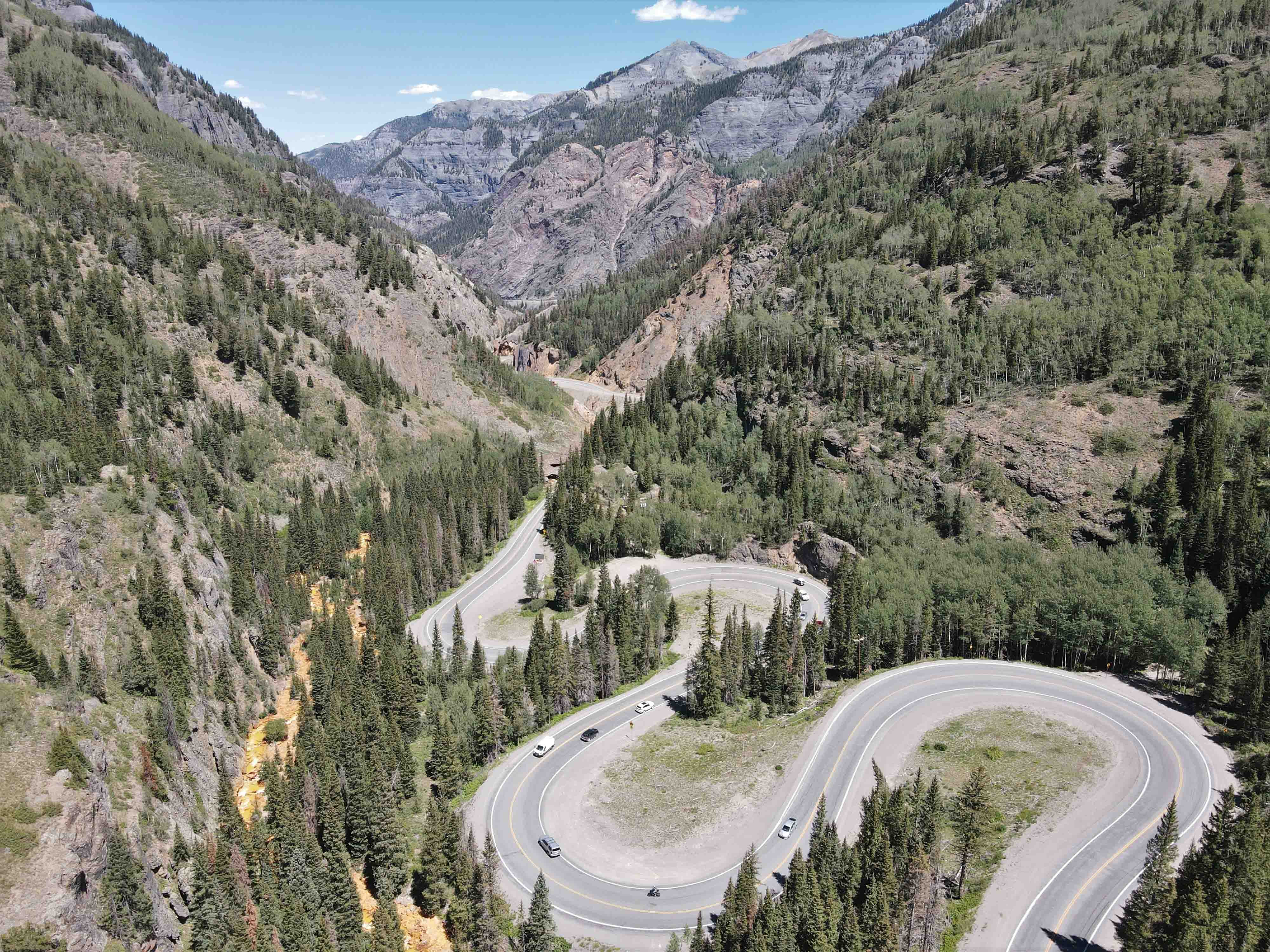 Twisty back road surrounded by mountains
Twisty back road surrounded by mountains
It’s time to get out there and explore!
This guide will serve as your comprehensive resource for crafting your own round-trip cross-country road trip itinerary. We’ll delve into route options, must-see destinations, and essential tips to ensure your journey is not only memorable but also expertly planned.
Crafting Your Round Trip Road Trip Itinerary
Defining the Cross-Country Experience
While there isn’t a strict definition, a “cross-country road trip” generally implies traversing a significant portion of the United States, ideally spanning from coast to coast. My personal benchmark? Covering at least 2,600 of the approximately 3,000 miles separating the Atlantic and Pacific coasts certainly qualifies. In fact, on one of my westward trips, the zig-zagging backroads led to an incredible 8,000 miles of exploration!
This article is designed to be your roadmap, exploring various routes, highlighting key destinations, and offering invaluable cross-country road trip advice. So, buckle up, because we’re about to embark on a journey of planning an unforgettable adventure!
Trip mapping tools, like Wanderlog available on iOS and Android, are invaluable for visualizing and organizing your itinerary.
Choosing Your Cross-Country Route: Northern, Central, or Southern
Generally, cross-country routes are categorized into three primary options:
- Northern Route: This path typically follows the northern states, weaving through states like Minnesota, Montana, and Idaho. Expect stunning mountain scenery and potentially cooler climates, especially in higher elevations.
- Central Route: The central route cuts through the heartland of America, passing through states like Kansas and Colorado. This option offers a mix of plains, mountains, and iconic landmarks.
- Southern Route: The southern route keeps to the warmer climates, crossing states such as Georgia, Texas, and Arizona. Think deserts, canyons, and vibrant southwestern culture.
Important Note: This guide is continuously being updated to provide the most comprehensive information. The Southern Route details are being added to ensure all major cross-country options are thoroughly covered. Your patience is appreciated as this resource evolves to become even more valuable.
As you explore the map provided, you’ll notice this guide currently focuses on the Central and Northern routes, reflecting my personal travel experiences in recent years. However, recognizing the importance of a complete resource, the Southern Route, inspired by a memorable cross-country drive in an antique Porsche in 2019, will be incorporated shortly.
It’s important to note that while these routes are presented in an east-west orientation based on my own travels, they are equally adaptable for westbound journeys. The flexibility is key to crafting a Travel Trip Itinerary that suits your specific starting point and direction.
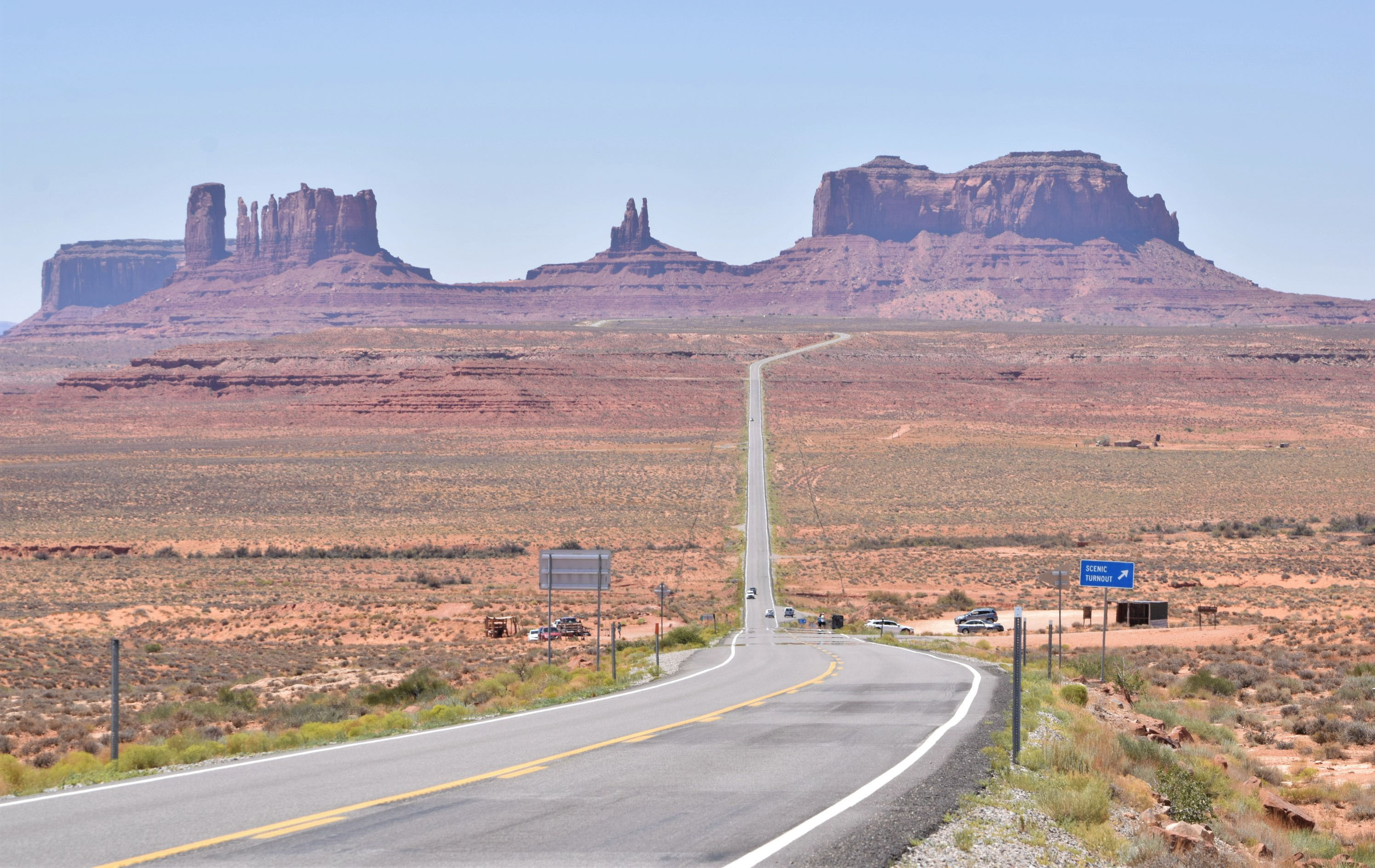 Monument Valley back road
Monument Valley back road
Planning Your Cross Country Road Trip: Time and Priorities
Planning a cross-country road trip, especially one spanning 6,000 miles or more, requires a significant time commitment. Even with stretches of interstate driving, anticipate spending at least 125 hours behind the wheel. For those unfamiliar with long road trips, or even seasoned travelers, that’s a substantial amount of driving. To create a sustainable and enjoyable road trip itinerary, it’s crucial to manage driving time effectively. A recommended guideline is to limit actual driving time to approximately 6 hours per day. This allows for exploration, spontaneous stops, and prevents driver fatigue, ensuring a positive travel experience.
When considering road trips, it’s helpful to categorize them into two main types:
- Regional Immersion Trips: These trips focus on deeply exploring a single region, delving into the unique nuances, attractions, and hidden gems within a specific geographical area. Time is spent savoring the details of one location.
- Multi-Regional Experience Trips: Cross-country road trips inherently fall into this category. Instead of in-depth exploration of a single area, you experience a curated “sampler platter” of diverse regions. It’s an “appetizer adventure,” offering a taste of what different parts of the country have to offer.
Think of your cross-country drive as a scouting mission. You’ll identify regions that ignite a desire for future, more in-depth exploration, and discover areas that might not align with your interests. Avoid planning a cross-country trip with the expectation of thoroughly exploring every location. Unless you have unlimited time, attempting to do so will likely lead to disappointment and a rushed, less enjoyable experience.
Prioritization is paramount. The initial stages of planning should involve discussions with your travel partners to identify “must-see” destinations, “would-like-to-see” locations if time allows, and areas of lesser interest. This collaborative process forms the foundation of your route planning and, ideally, simplifies the itinerary creation.
Important Note: This itinerary, while drawing from my recent cross-country journeys, is designed to be more comprehensive. Time constraints on my personal trips meant some destinations were missed. This guide will incorporate additional points of interest, allowing you to customize your itinerary based on your priorities. For any specific questions or personalized advice, feel free to email me directly.
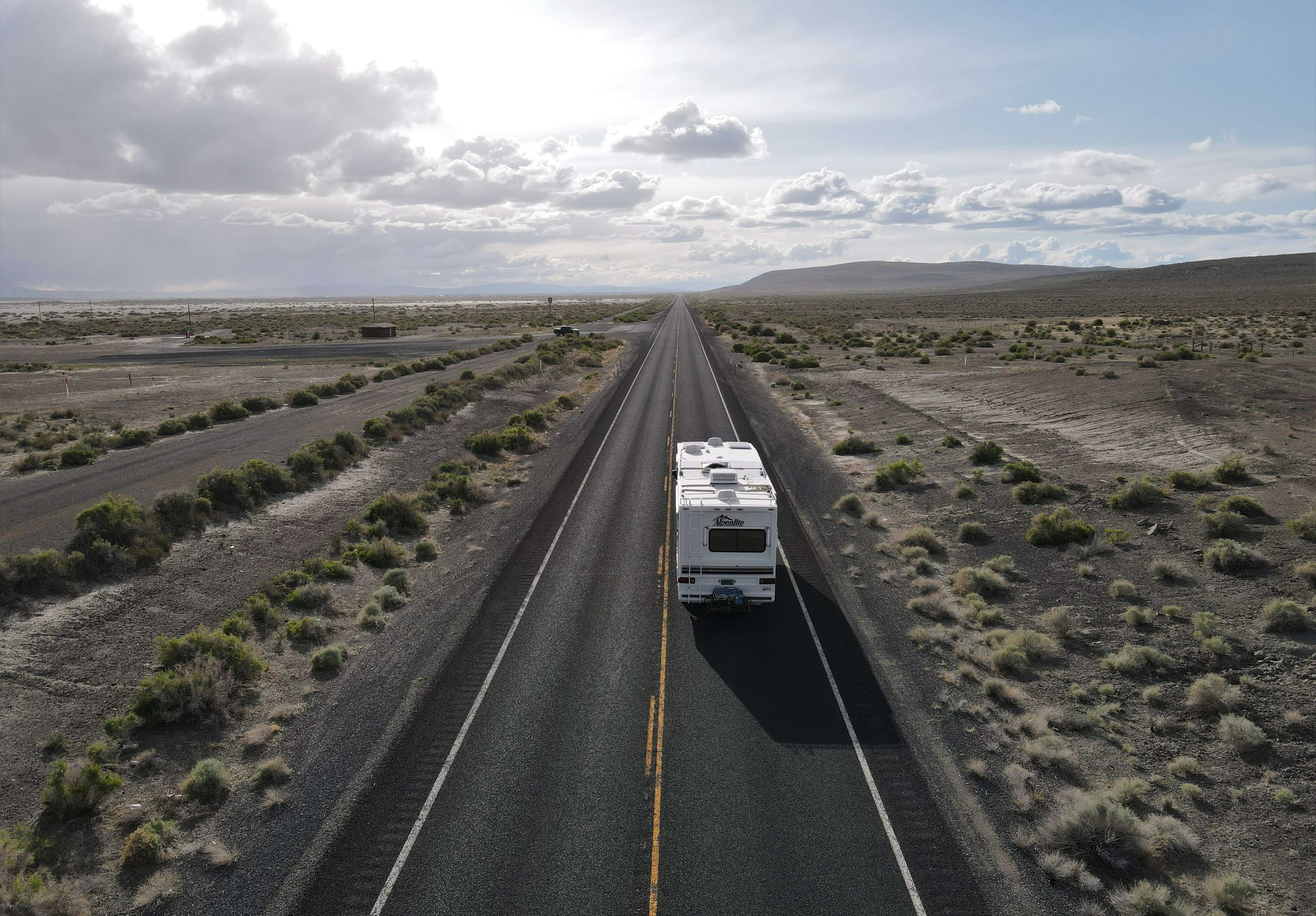 RV bus driving west on a back road
RV bus driving west on a back road
Head for the sunset!
Driving West: The Central Cross Country Route Itinerary
Our journey begins in Pennsylvania, my home state, providing a natural starting point for this westward itinerary. From there, we’ll chart a course nearly directly west across the central United States, eventually dipping southward for a diverse and scenic experience.
Pennsylvania: Keystone State Beginnings
Pennsylvania, the starting point for many eastern cross-country journeys, offers a wealth of attractions. Recommendations are highly dependent on your interests, and I’ve dedicated numerous articles to exploring the state’s diverse offerings. For this itinerary, we’ll focus on a few broad highlights and essential considerations to get your trip underway.
Places to Explore in Pennsylvania
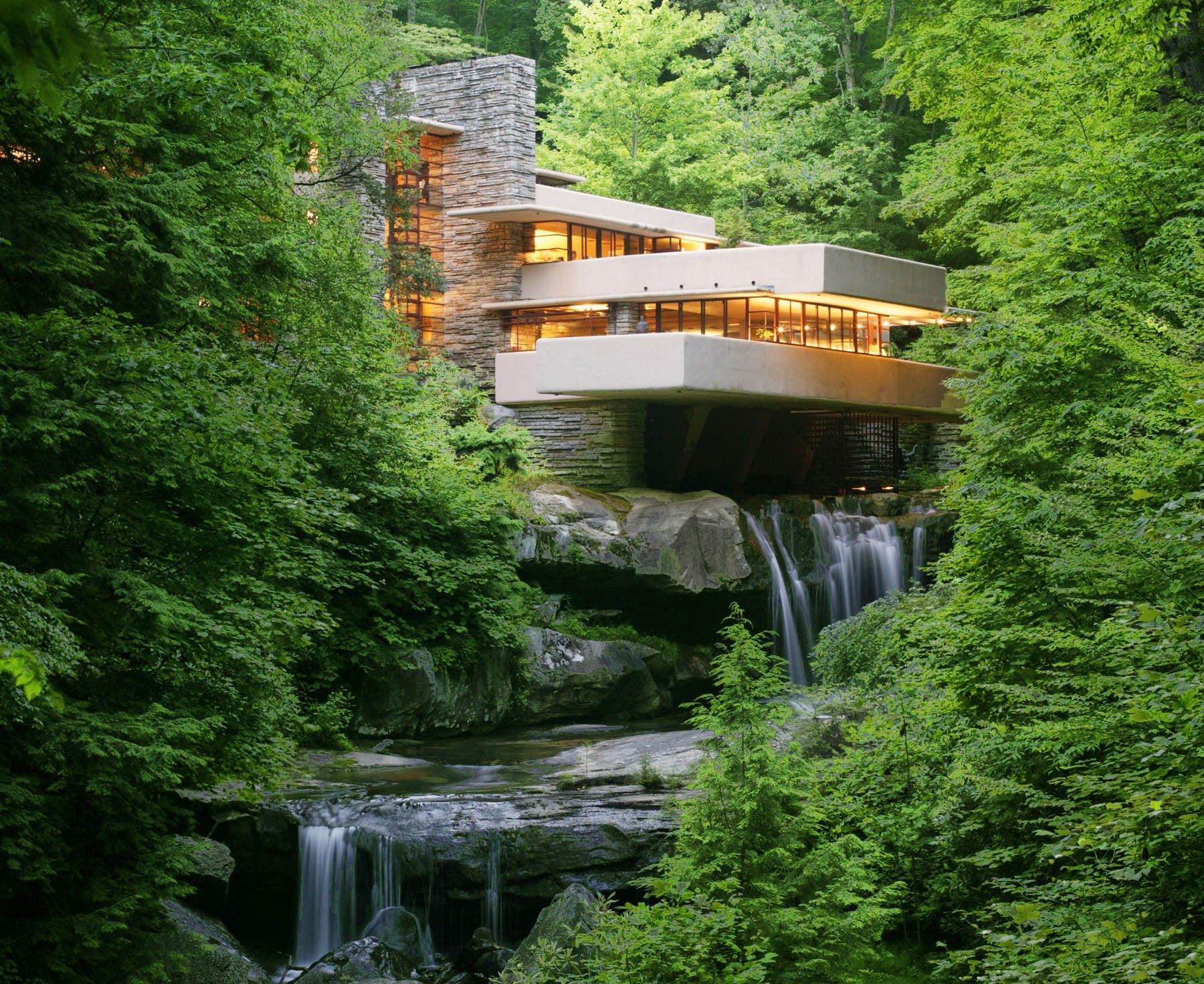 Fallingwater house Laurel Highlands Pennsylvania
Fallingwater house Laurel Highlands Pennsylvania
Scenic Back Road Routes in Pennsylvania
West Virginia: Mountain State Majesty
West Virginia, known as the “Mountain State” and a major coal-producing region, is a treasure trove of natural beauty. Expect dramatic mountainous terrain, sweeping vistas from hilltops, and winding back roads that are a joy to drive. West Virginia is an excellent addition to any cross-country route for those seeking scenic drives and outdoor adventures.
Must-See Destinations in West Virginia
Recommended Back Road Routes in West Virginia
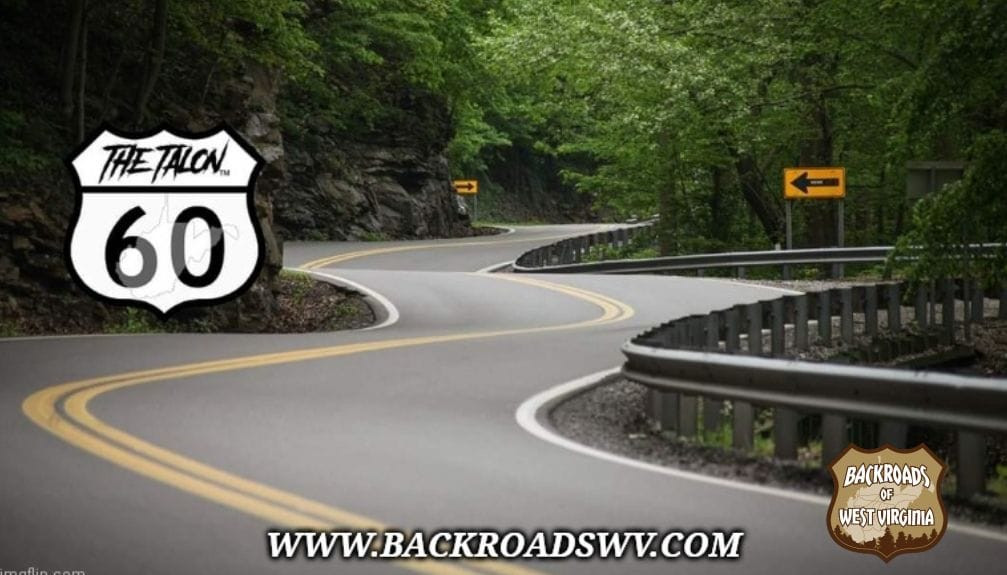 The Talon back road in West Virginia
The Talon back road in West Virginia
Photo Credit: The TalonBack to Top
Kentucky: Bourbon, Bluegrass, and Beyond
Kentucky, the “Bourbon State” and “Bluegrass State,” and home to the legendary Kentucky Derby, is a state that consistently ranks among my favorites on the East Coast. Beyond its famous exports, Kentucky boasts stunning back roads and diverse landscapes. It’s also a significant coal mining state, adding another layer to its rich history.
Top Attractions in Kentucky
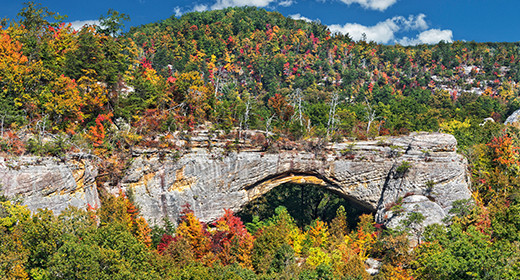 Natural Arch Daniel Boone National Forest
Natural Arch Daniel Boone National Forest
Natural Arch Scenic Area At Parkers Lake Kentucky In The Daniel Boone – image courtesy of US Forest Service
Back Road Routes to Explore in Kentucky
Missouri: Gateway to the West
Missouri, widely recognized as the “Gateway to the West,” plays a pivotal role in American expansion history. Its largest city, St. Louis, is home to the iconic Gateway Arch, symbolizing westward movement. Strategically located on the western banks of the Mississippi River, Missouri often marks the first “western” state encountered on a cross-country journey.
Places to Visit in Missouri
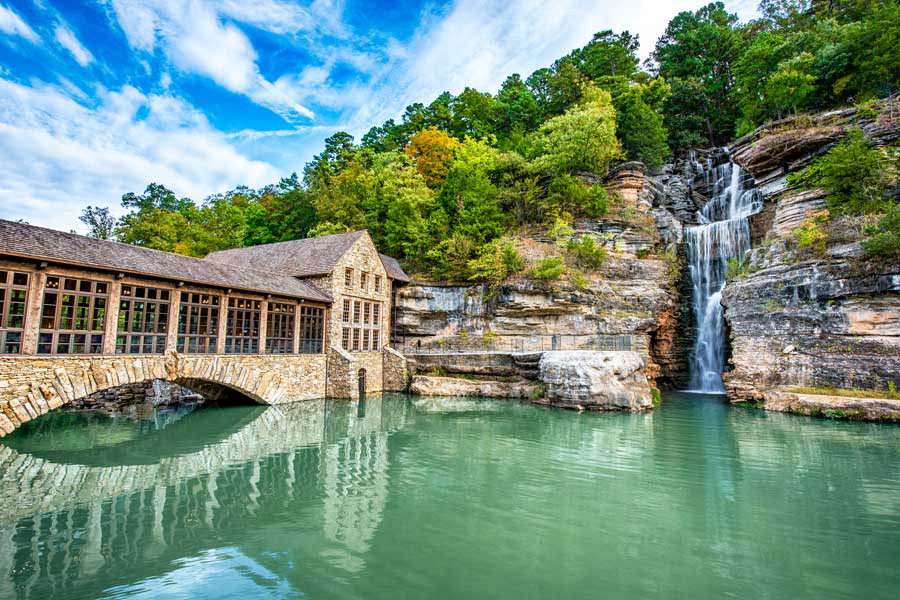 Waterfall at Dogwood Canyon Falls Museum
Waterfall at Dogwood Canyon Falls Museum
Cedar Lodge at Dogwood Canyon Falls – image courtesy of Cedar Lodge
Scenic Drives in Missouri
Kansas: The Heartland Experience
Let’s be frank: Kansas might be one of the less visually dramatic states on this route. Crossing the central plains is often unavoidable on a cross-country trip. However, even within the seemingly flat landscape, there’s a unique beauty to be discovered.
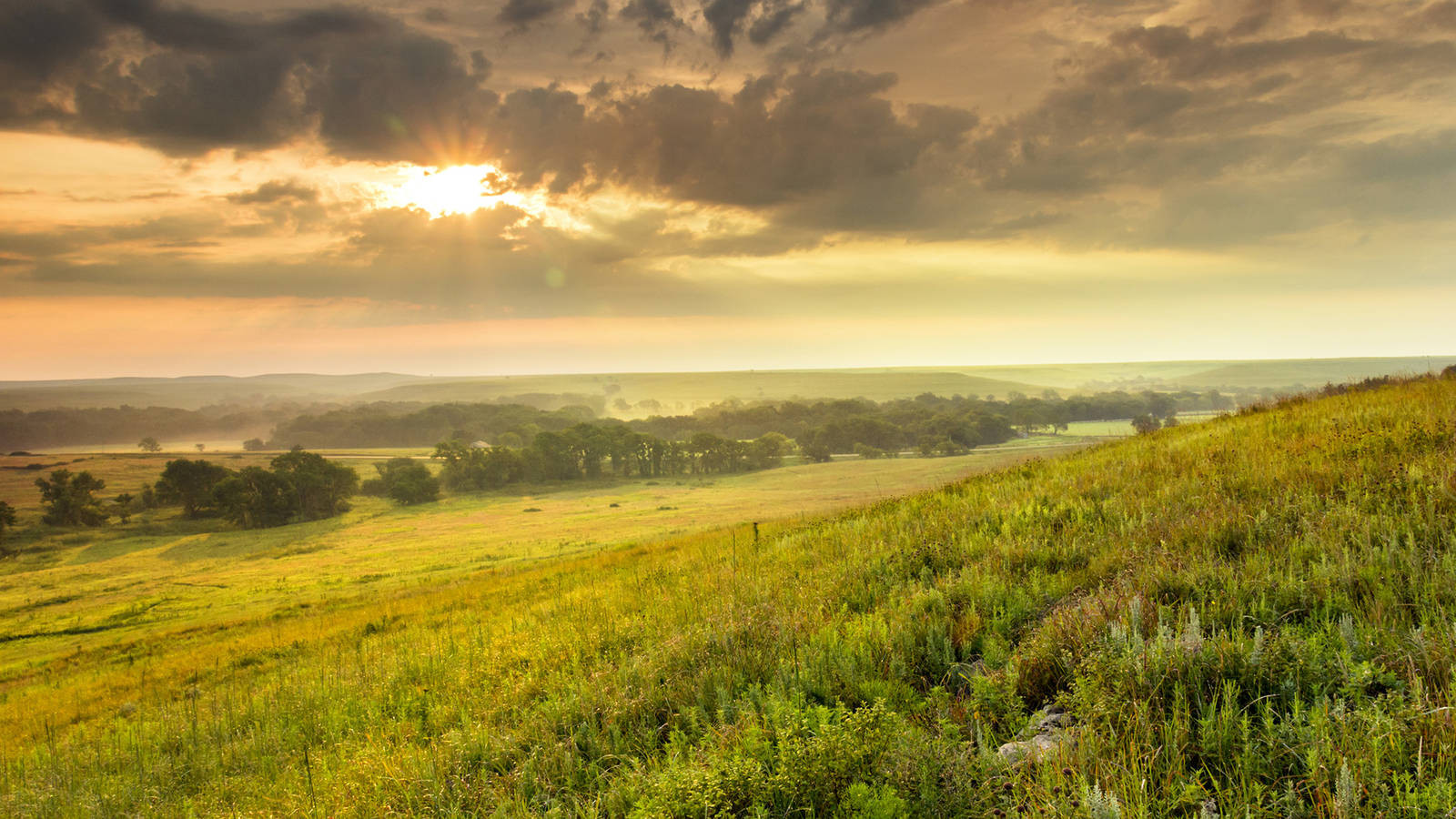 Tallgrass Prairie in Kansas
Tallgrass Prairie in Kansas
Image courtesy of National Parks Conservation Association
Points of Interest in Kansas
Back Road Options Through Kansas
- US Route 50: For a truly backroads-centric cross-country experience, US-50 is a prime choice, especially if you’re planning a stop in Kansas City for some legendary BBQ.
- US Route 400: If you prefer a more rural route, US-400 traverses the southern part of Kansas and connects with Route 50 in Dodge City.
This slideshow requires JavaScript.
(EDITOR’S NOTE: Destination highlights from Colorado westward will focus on lesser-known gems, going beyond the obvious major tourist attractions.)
Colorado: Entering the Rocky Mountains
Prepare for a dramatic shift in scenery as you enter Colorado. While eastern Colorado shares some visual similarities with Kansas, the landscape transforms dramatically as you approach the mountains. Colorado easily ranks among my top five states for breathtaking back roads. The sheer abundance of incredible scenery is almost overwhelming, exceeding what words or pictures can fully capture. Selecting just a few highlights and routes becomes a delightful challenge from this point westward!
Unforgettable Colorado Destinations
Back Road Routes in Colorado’s Rockies
Utah: Red Rock Wonders
Similar to Colorado, remember that this cross-country itinerary is a sampler, not an exhaustive exploration. Utah’s natural beauty is so extensive that weeks would be needed to see it all. The state is famed for its red rock desert landscapes, iconic canyons and arches, and the vast Bonneville Salt Flats. The scenery is often surreal and awe-inspiring, appearing unexpectedly around every bend. Be prepared for frequent stops to soak in the views as you journey through the “Beehive State.”
This slideshow requires JavaScript.
Must-See Utah Attractions
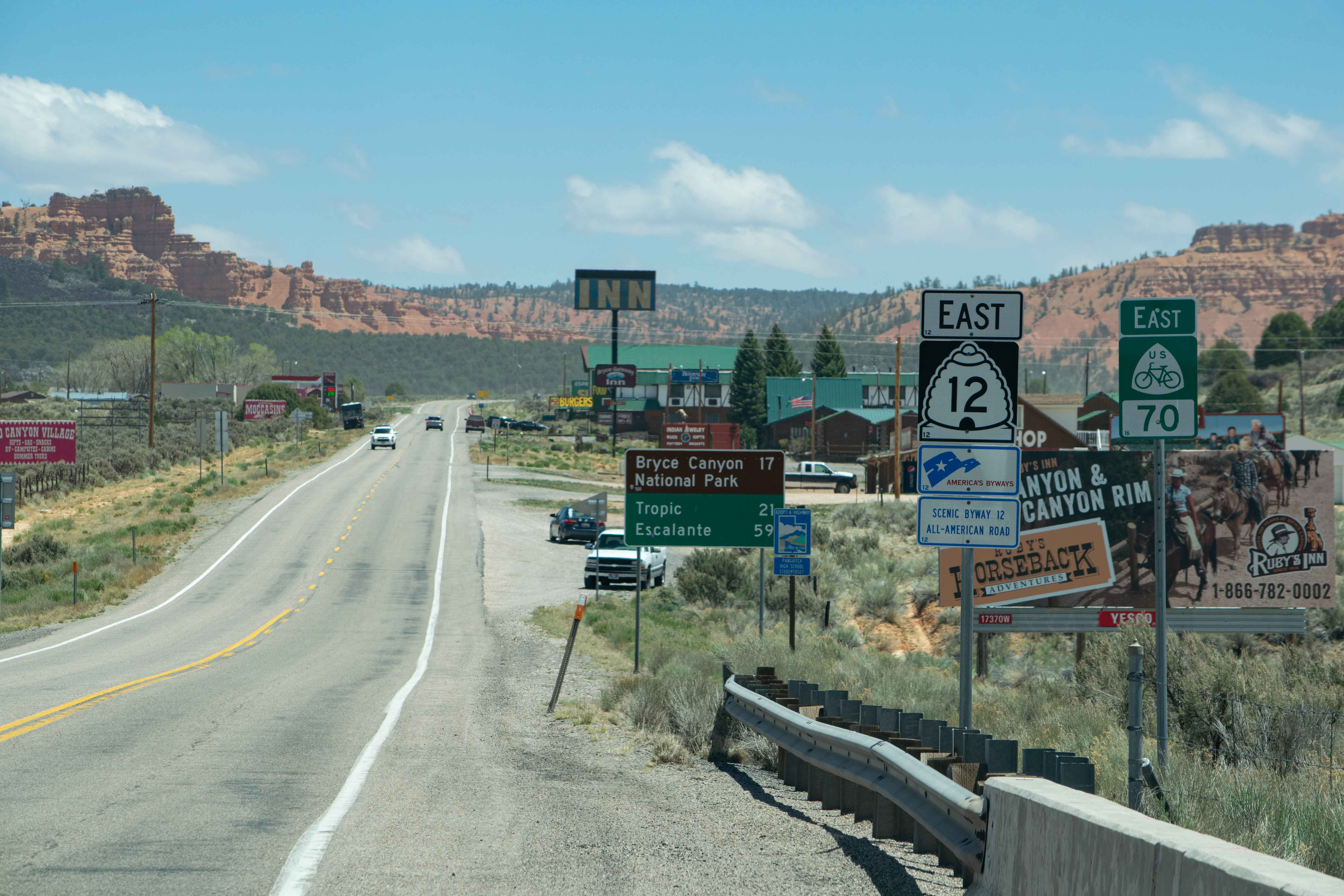 Utah State Route 12 sign
Utah State Route 12 sign
Utah State Route 12, western terminus
Back Road Routes Across Utah
- US Route 89: Utah’s rugged terrain makes east-west backroads travel challenging. US-89 offers a unique route, entering from Arizona, briefly going east-west near Glen Canyon and Grand Staircase, before turning north again.
- US Route 6: This historic transcontinental route winds through Utah, intersecting with other well-known US routes.
- US Routes 40 & 50: These routes run parallel across Utah, but be mindful as they may attempt to direct you onto interstates.
- Utah Route 12: Rightfully included among “The Best Back Roads in America,” Utah’s State Route 12 is a panoramic marvel, carving through some of the most mind-bending rock formations and desert landscapes imaginable.
Nevada: High Desert Majesty
It was difficult to bypass Arizona, another favorite state, but for the sake of trip length and itinerary balance, some choices are necessary. Nevada is an imposing state of stark beauty. It also encompasses some of the most remote and desolate areas in the contiguous United States. Be prepared for long stretches of driving with minimal signs of civilization. Fuel up whenever possible! However, this same remoteness provides unparalleled, uninterrupted natural panoramas stretching to the horizon. It’s a truly awe-inspiring experience that can shift your perspective.
This slideshow requires JavaScript.
Points of Interest in Nevada
This slideshow requires JavaScript.
Nevada Back Road Routes
- US Route 50: As mentioned, Route 50 offers a straightforward east-west passage through Nevada’s arid landscapes. Again, prioritize fuel! Long distances between gas stations are common.
- US Route 6: Joining Route 50 from Utah, these routes diverge in Ely. Route 50 heads north toward Lake Tahoe, while Route 6 cuts south toward Tonopah and Mono County, CA. Route 6 is equally remote; caution and vehicle preparedness are essential.
- US Route 95: While a north-south route, US-95 is worth mentioning as a personal favorite back road. It’s filled with scenic beauty and connects to key destinations within Nevada.
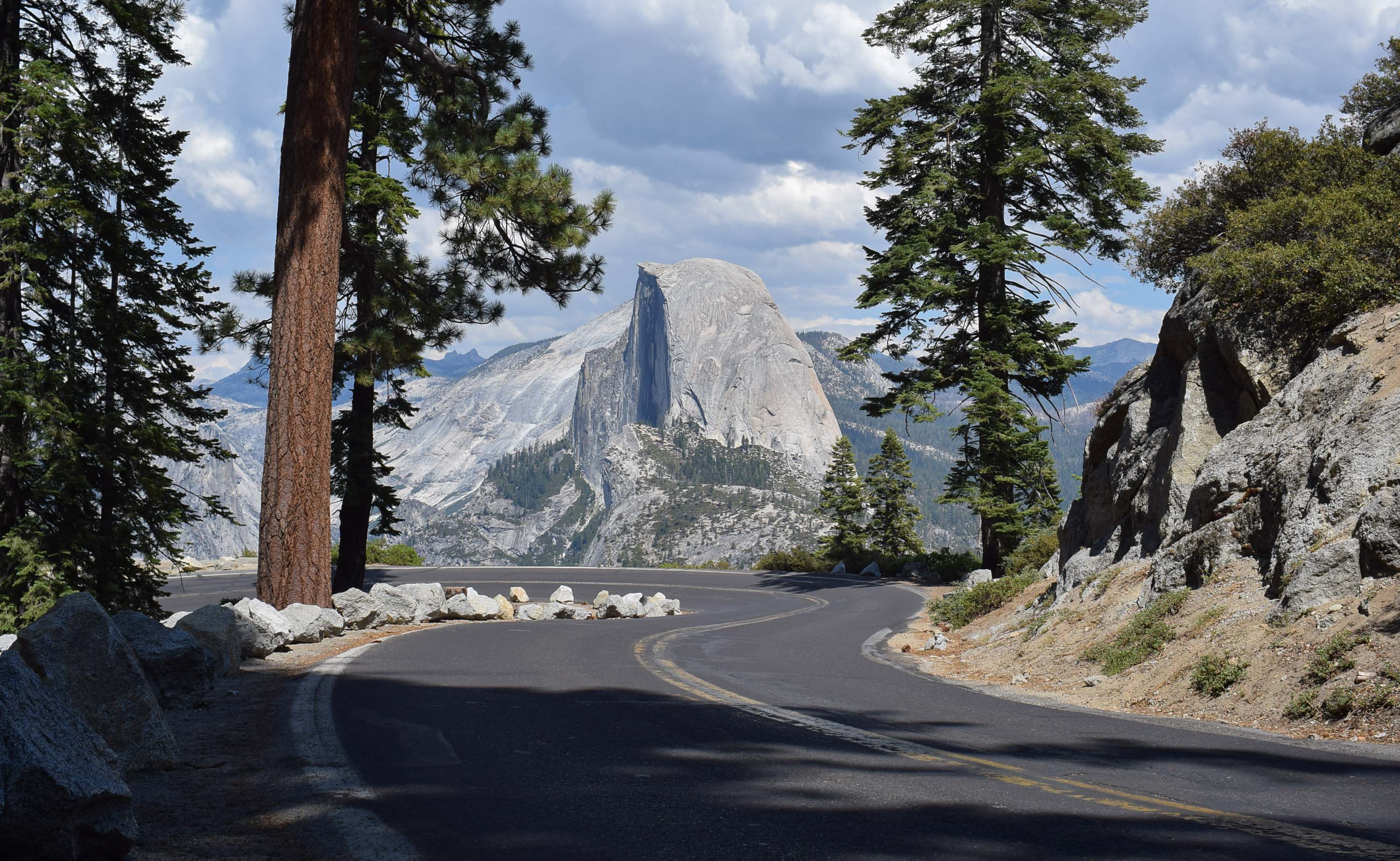 Yosemite Glacier Point Road
Yosemite Glacier Point Road
One of the most epic views – Glacier Point Road in Yosemite National Park (Half Dome in the distance) – in our nation’s most epic state
California: Golden State Grand Finale
California, the final westward destination, is easily the most daunting state to encompass. As the third-largest state, superlatives abound, especially for back road driving. I often describe California as possessing natural features similar to other states – forests, mountains, deserts, coastlines – but on a grander, almost mythical scale. The terrain is dramatic, the deserts more arid, the coastline breathtaking, and the trees incredibly tall. California holds a prominent place in American mythology, and rightfully so. Attempting to cover everything is impossible; we’ll focus on highlights from our cross-country adventure and leave further exploration for future trips!
Northern California Destinations
This slideshow requires JavaScript.
Back Road Routes Across California
Driving East: The Northern Cross Country Route Itinerary
For the eastbound return journey, we’ll explore a northern route, venturing into states previously unexplored. The primary goals were to experience Idaho, Yellowstone National Park, and drive the famed Beartooth Pass – all successfully accomplished! Note: While the westbound trip briefly touched Nevada’s northwestern corner, we’ll begin this eastbound itinerary in Oregon to showcase a different starting point. Oregon, in many ways, rivals California and offers an excellent starting point for an eastbound cross-country road trip.
Oregon: Pacific Northwest Beauty
Oregon, the gateway to the Pacific Northwest, rivals its southern neighbor, California, in biodiversity and stunning landscapes. While smaller and often less sunny, Oregon is enchanting and unique: lush forests meet the rugged Pacific coastline, and the Cascade Mountains separate the coast from a surprisingly vast high desert in the southeast. National Forests are abundant, and Oregon even boasts a notable wine region!
This slideshow requires JavaScript.
Places to See in Oregon
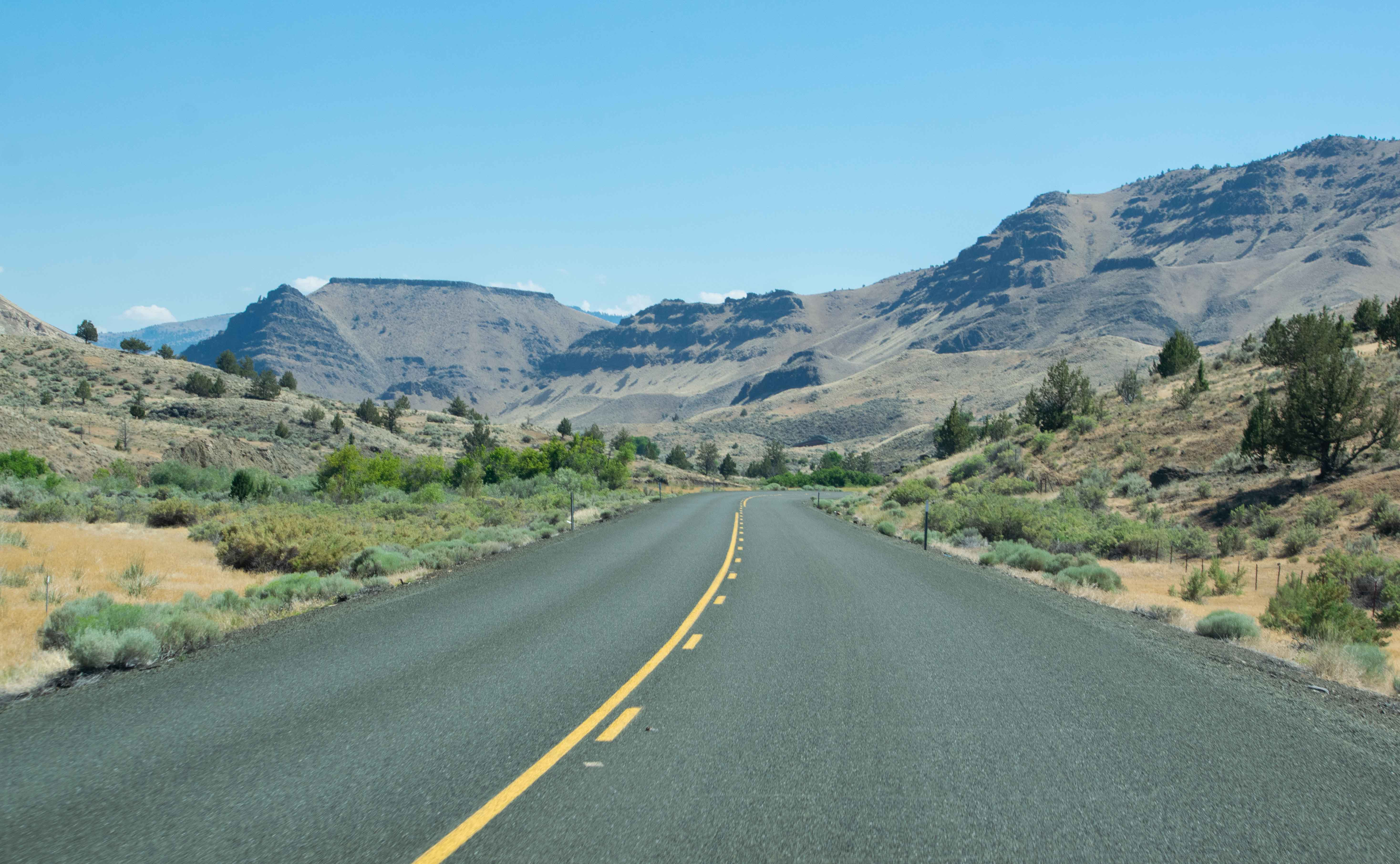 Oregon back road through desert
Oregon back road through desert
Oregon Back Road Routes
This slideshow requires JavaScript.
Idaho: The Gem State’s Hidden Splendor
Idaho is perhaps the next most intimidating state to describe after California. This might seem surprising for a state primarily known for potatoes. However, dismissing Idaho as farmland is a grave oversight. It’s one of America’s most stunningly beautiful states. Idaho seems to maintain a low tourism profile, almost as if guarding its natural splendor as a secret. My own discovery of Idaho’s allure was somewhat accidental, while planning a road trip for someone else in 2019. The more I researched, the stronger the desire to explore became. Even with high expectations, Idaho’s rugged mountains exceeded them. Choosing photos, especially drone shots of back roads, was incredibly challenging due to the sheer beauty.
Idaho Destinations Worth Exploring
This slideshow requires JavaScript.
Idaho Back Road Routes
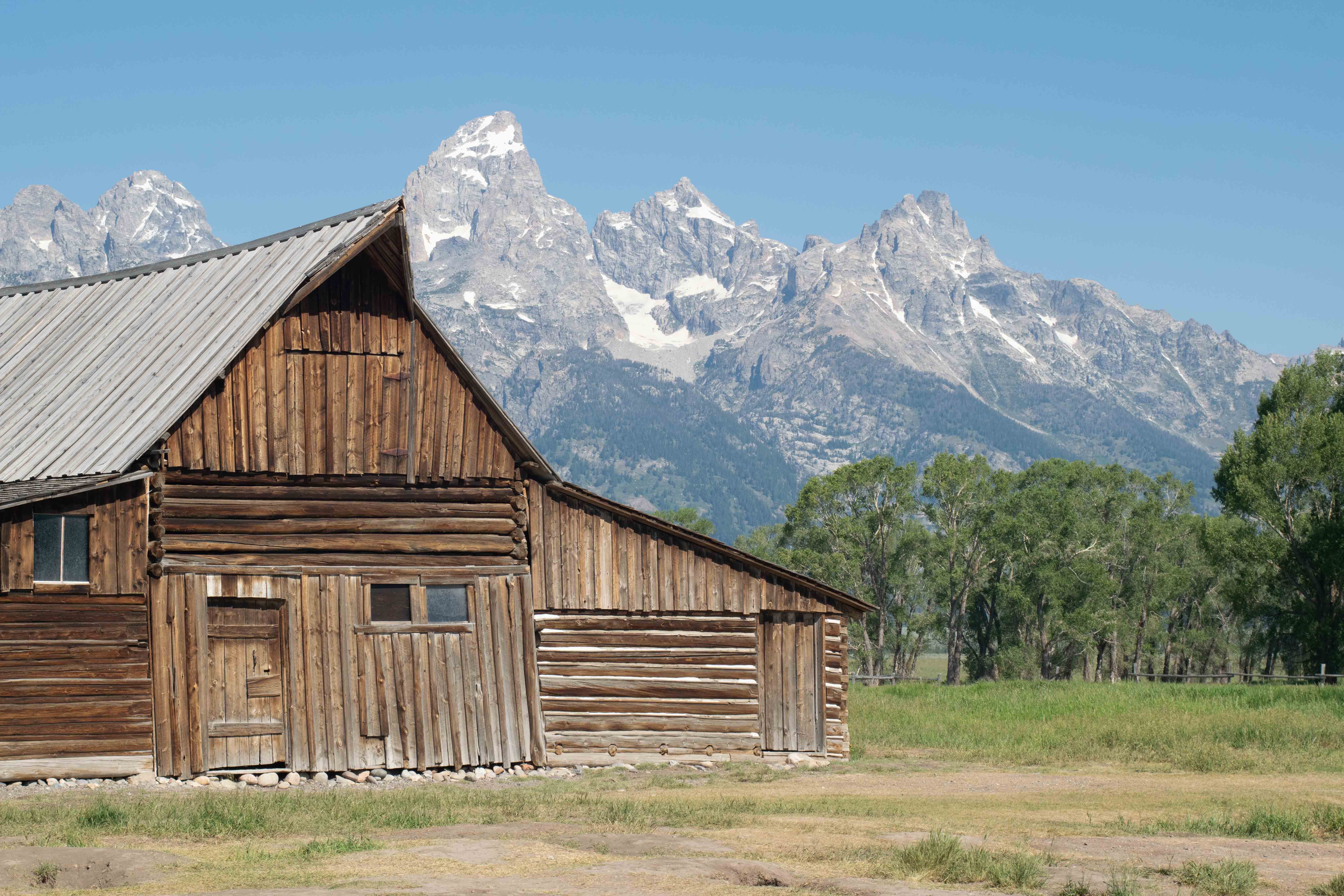 Wyoming mountains and barn
Wyoming mountains and barn
Is there a more iconic Wyoming view?
Wyoming: Big Sky Country
Dear Western United States: Please, keep having so many gorgeous states! Sincerely, everyone. Choosing between heading into Montana or Wyoming from Idaho is a tough call. Both offer stunning mountain driving and vast, less scenic plains. The deciding factor for this trip was the opportunity to finally visit Grand Teton and Yellowstone National Parks. Heading slightly south into Wyoming rewarded us with incredible rugged scenery. The chance to briefly detour into Montana via Beartooth Pass was an added bonus. While back road options are somewhat limited in this vast state, every drive across Wyoming has been enjoyable.
This slideshow requires JavaScript.
Wyoming Points of Interest
This slideshow requires JavaScript.
Back Road Routes in Wyoming
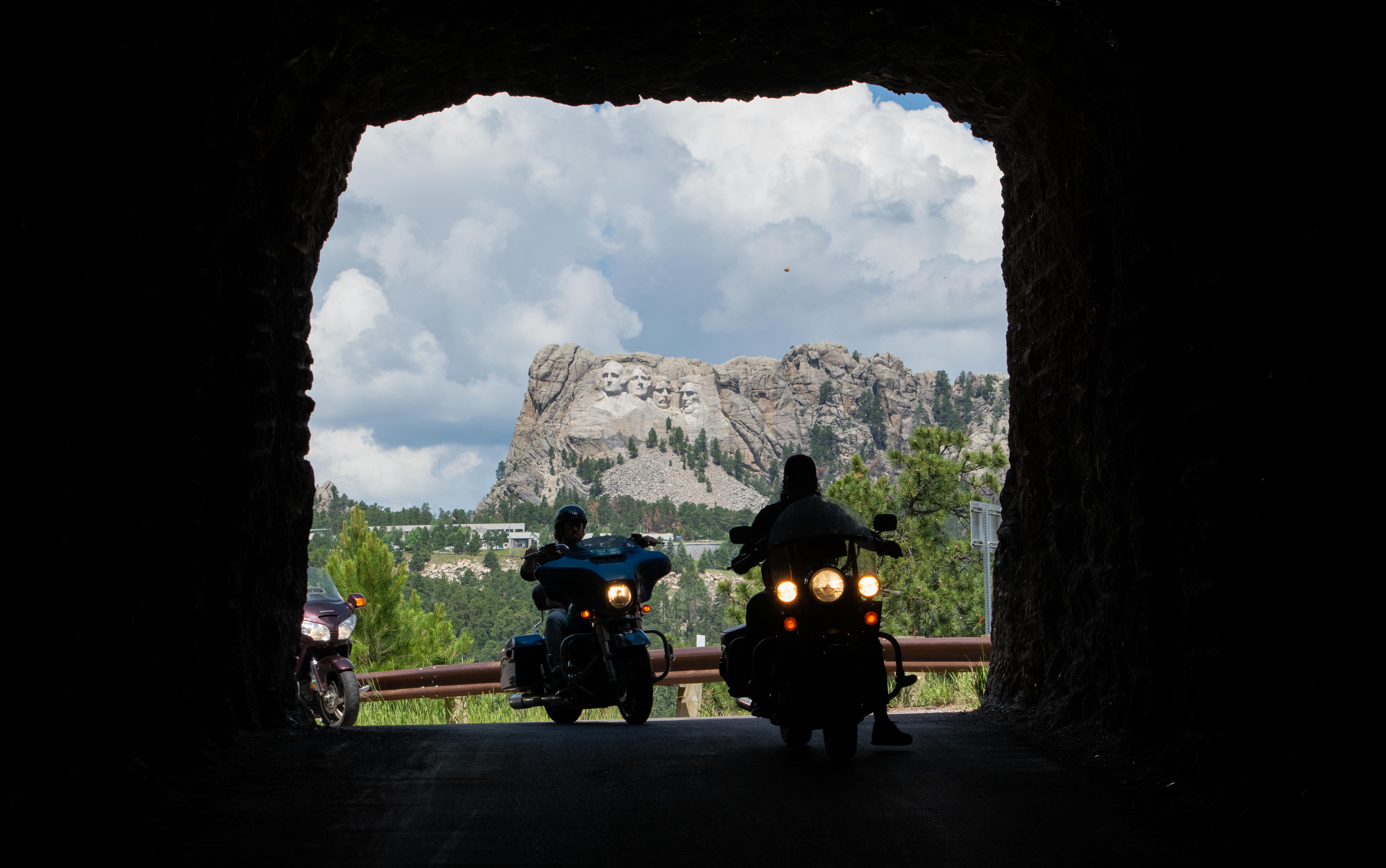 Mount Rushmore with motorcycles
Mount Rushmore with motorcycles
South Dakota: Great Plains Transition
Coming eastward, central South Dakota marks the beginning of the Great Plains. After navigating the granite and pine maze of the Black Hills, the landscape flattens rapidly. The Missouri River bisects the state, creating a dramatic geographical divide. Interestingly, the Black Hills is where I had my only wild mountain lion sighting. On the bright side, at least it’s not North Dakota (just kidding!).
South Dakota Attractions
This slideshow requires JavaScript.
South Dakota Back Road Routes
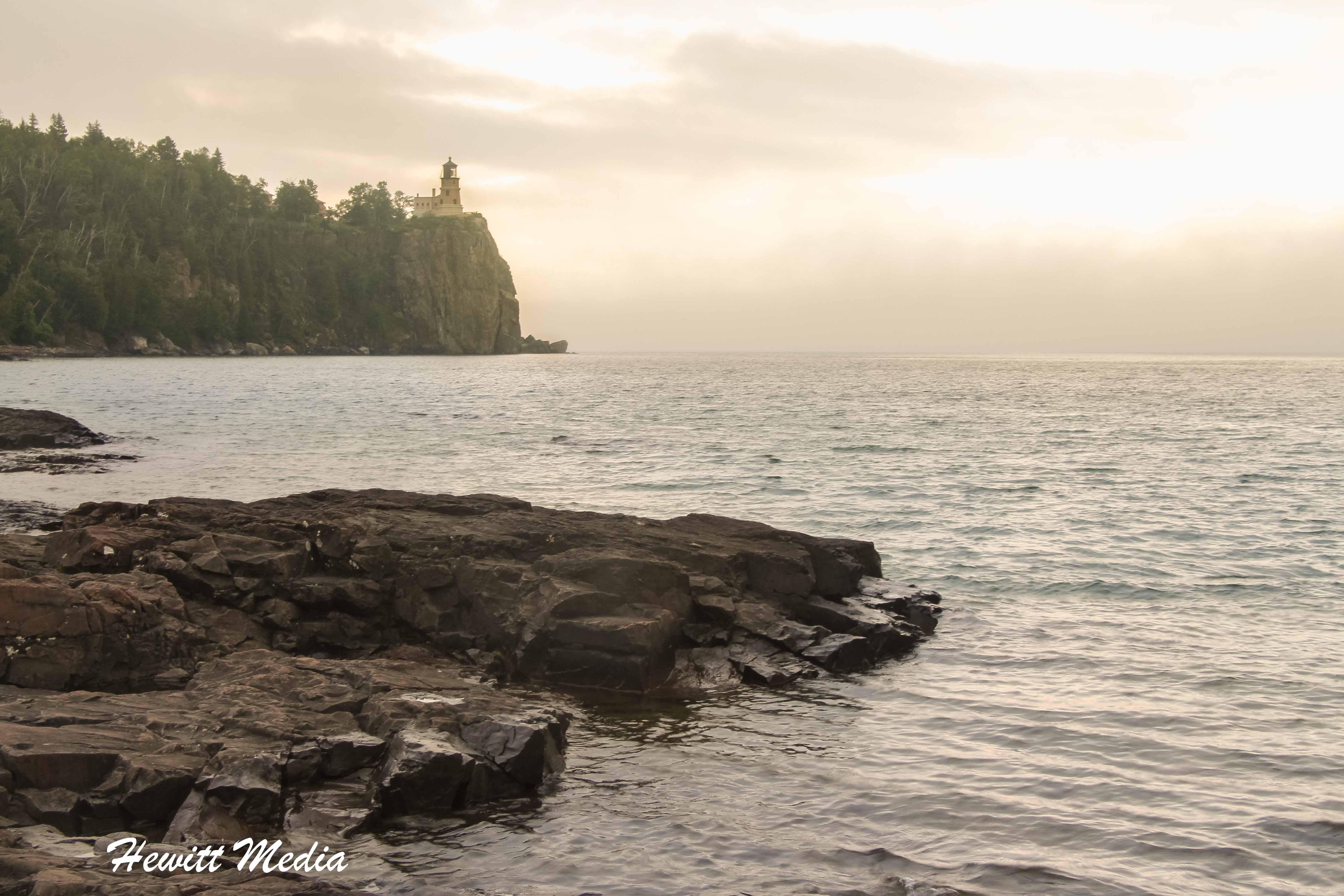 Split Rock Lighthouse in Minnesota
Split Rock Lighthouse in Minnesota
Image courtesy of Wanderlust Travel PhotographyBack to Top
Minnesota: Land of 10,000 Lakes
You’re now firmly in the Great Plains. The rugged Wild West aura fades in the rearview mirror. While the pastoral beauty of America’s breadbasket is peaceful, podcasts are recommended to keep your mind engaged during long drives across seemingly endless horizons. The “Land of 10,000 Lakes” (actually closer to 12,000) is a nature lover’s paradise and the source of the Mississippi River.
Minnesota Destinations
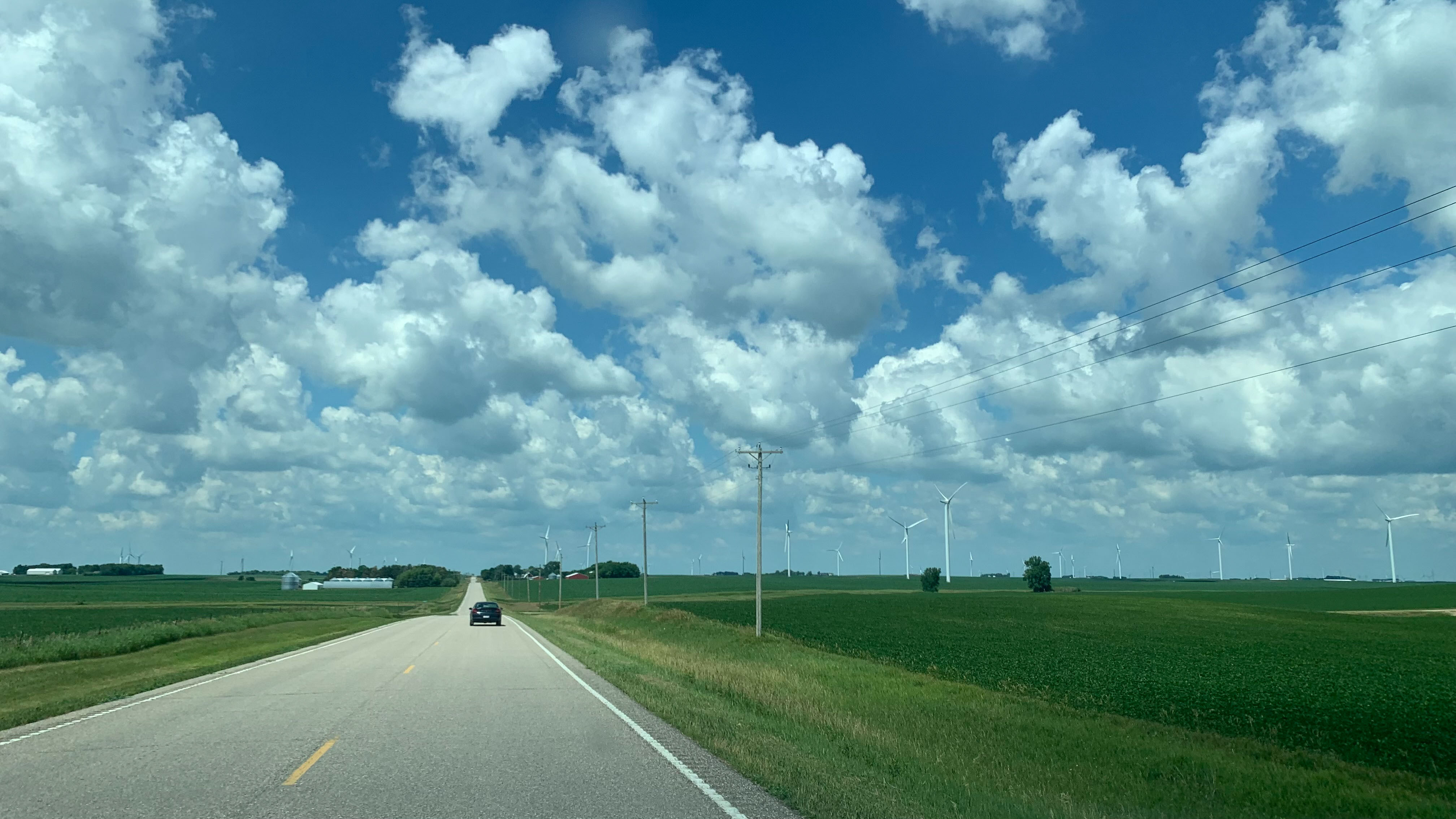 Minnesota back road landscape
Minnesota back road landscape
Minnesota might not have the most captivating landscapes, but the pastoral beauty of its back roads still make for a pleasant and peaceful road trip!
Minnesota Back Road Routes
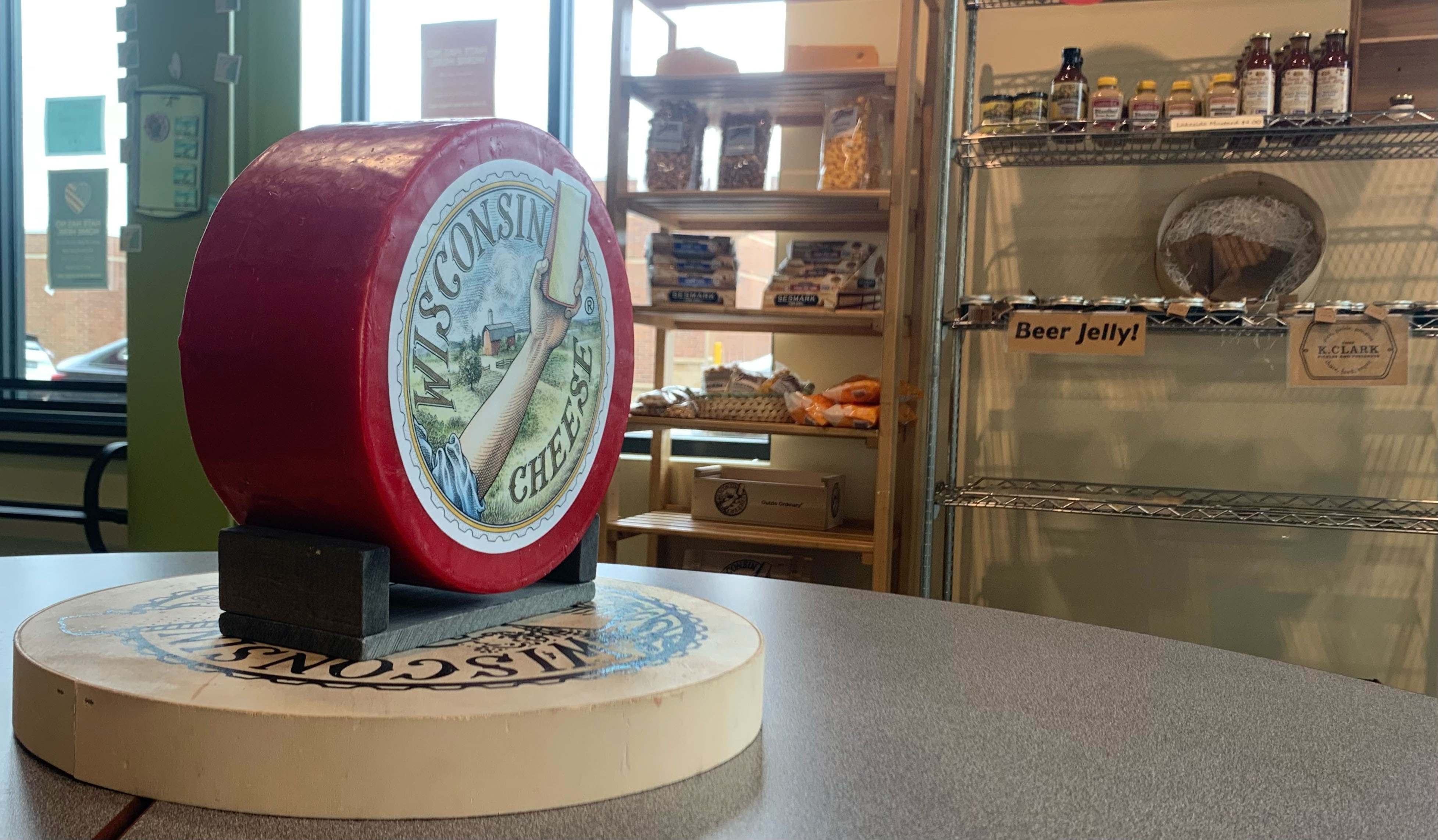 Wisconsin cheese wheel
Wisconsin cheese wheel
Wisconsin: Cheese, Cycles, and Scenery
Cheese! Home to abundant cheese and dairy, Harley-Davidson, and OshKosh B’Gosh, Wisconsin offers plenty to experience. Crossing the Mississippi into Wisconsin marks the “beginning of the end” of your cross-country journey, signaling the return to the eastern side of the country.
Wisconsin Attractions
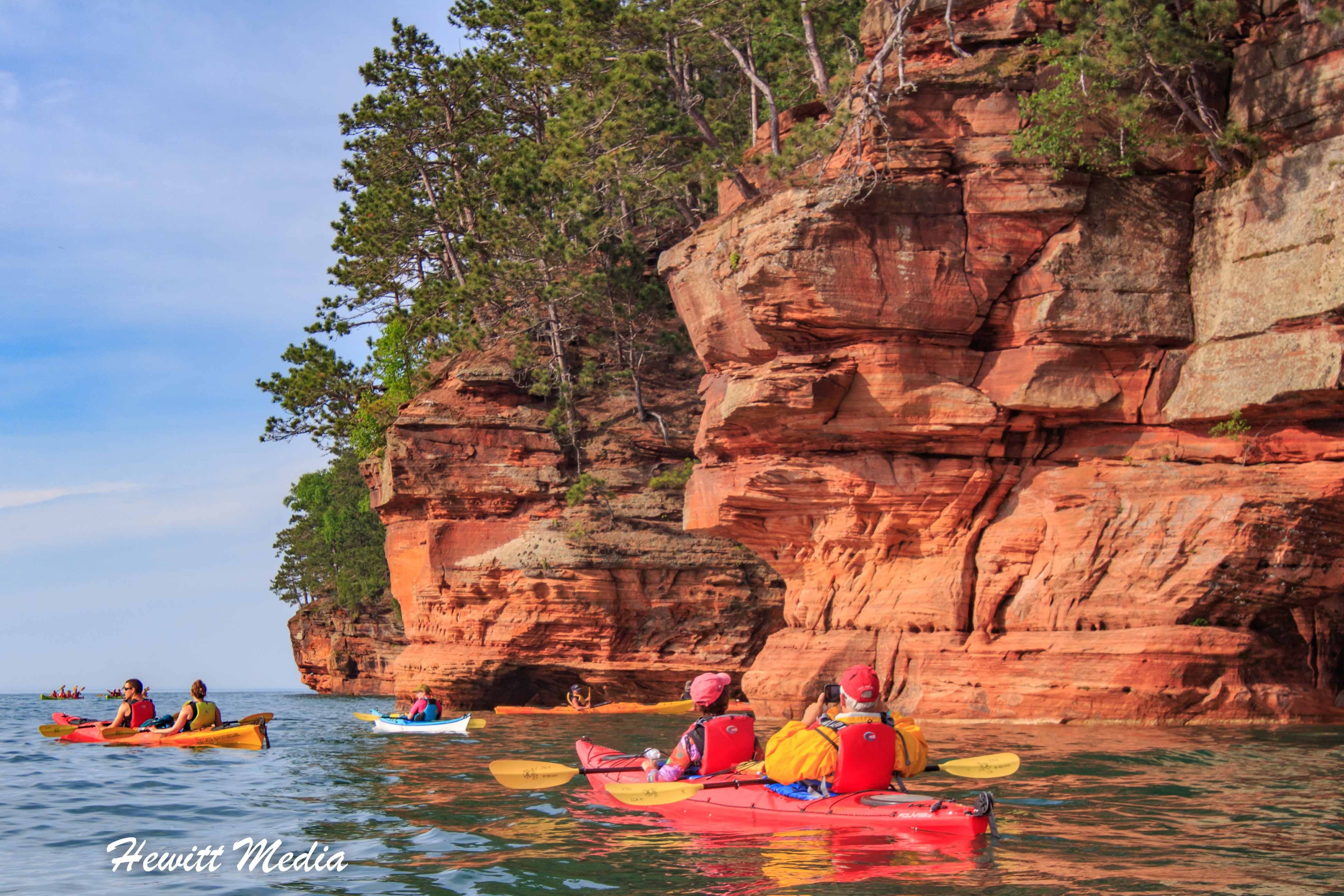 Kayakers at Apostle Islands
Kayakers at Apostle Islands
Image courtesy of Wanderlust Travel Photography
Wisconsin Back Road Routes
- US Route 14: Northwest to southeast across southern Wisconsin, US-14 passes through Madison and Spring Green, primarily traversing scenic farmland.
- US Route 18: East-west from Milwaukee, US-18 crosses southern Wisconsin towards Iowa and South Dakota, also passing through Madison but taking a more rural southern route.
- US Route 10: One of two US historic routes with a designated ferry, US-10 starts on Lake Michigan’s shores. A more northern route, it offers detours to Green Bay, Oshkosh, and Eau Claire, alongside diverse natural scenery.
Illinois: Land of Lincoln and Backroads
Now we enter states that might be harder to generate excitement about. I admit to sometimes overlooking the “flyover states,” which is unfair. The Midwest has interesting destinations. My perception stems from the largely flat, open landscapes that may not immediately inspire “stunning” or “awe-inspiring” descriptions. However, Illinois, the Land of Lincoln, offers enjoyable back road drives and unique features worth discovering.
This slideshow requires JavaScript.
Images courtesy of Illinois DNR
Places to Visit in Illinois
Illinois Back Road Routes
- US Route 6: America’s longest contiguous historic route, mirrored by I-80 in many states. It crosses northern Illinois, passing through Chicago and highlighted locations.
- US Route 24: An original 1926 US highway, running from Michigan’s auto corridor to central Colorado. Eastbound, it enters Illinois at Quincy, goes northeast along the Illinois River to Peoria, then turns east to Indiana.
- US Route 50: Leaving St. Louis, US-50 becomes a straight shot across rural Illinois cornfields.
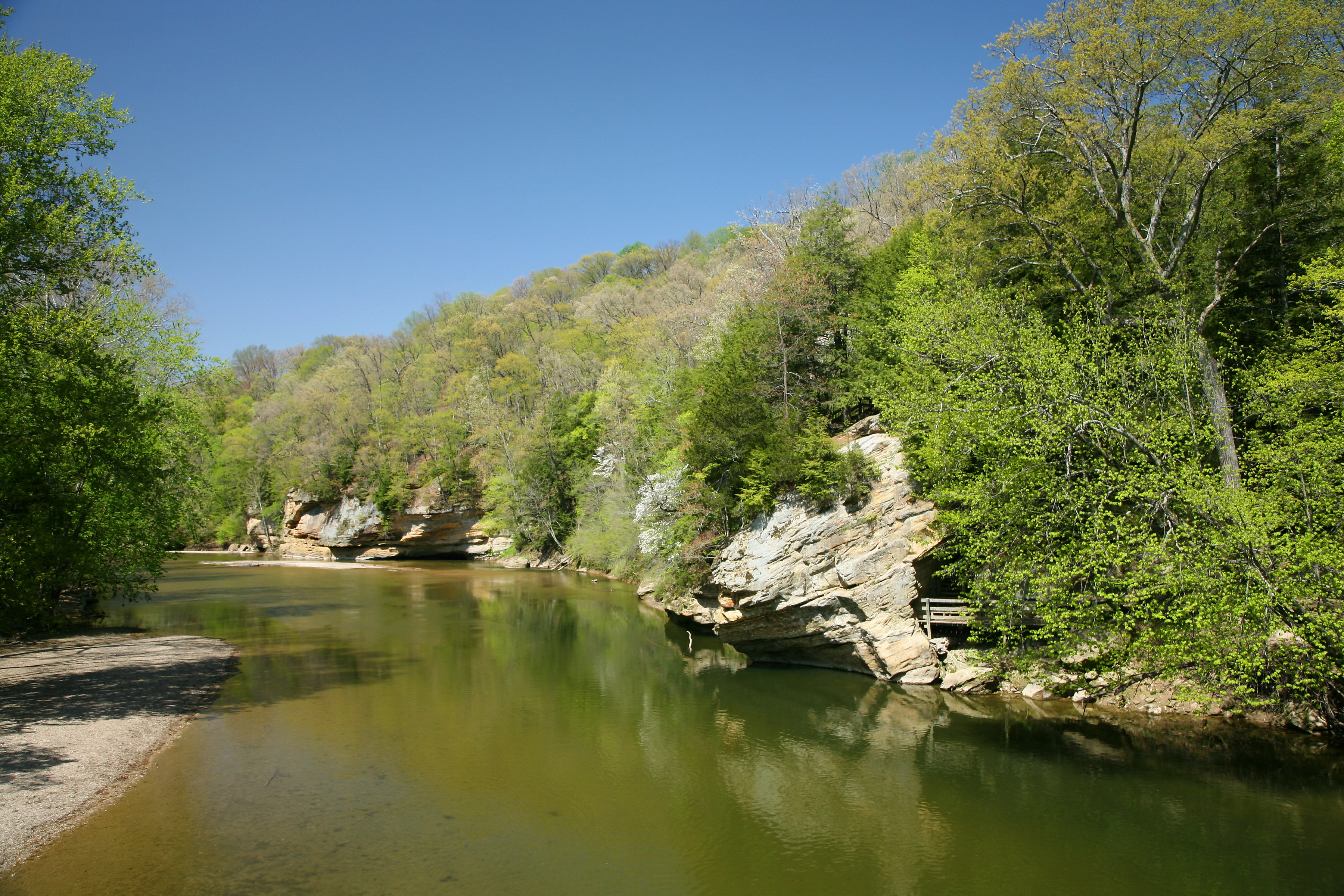 Sugar Creek at Turkey Run State Park in Indiana
Sugar Creek at Turkey Run State Park in Indiana
Image courtesy of Daniel Schwen & Wikipedia
Indiana: Hoosier Hidden Gems
Indiana, the “Hoosier State,” like its neighbors, is often seen as cornfield country. Yet, like other Midwestern states, Indiana holds hidden gems for travelers willing to seek them out.
Indiana Points of Interest
Indiana Back Road Routes
- US Route 24: Similar to its Illinois path, US-24 in Indiana parallels the Wabash River, leading to several state parks.
- US Route 36: Another original 1926 highway, US-36 runs east-west through rural Indiana, near Turkey Run and Shades State Parks, before reaching downtown Indianapolis.
- US Route 50: The southern route across Indiana, US-50 travels through rural areas, eventually heading northeast towards Cincinnati.
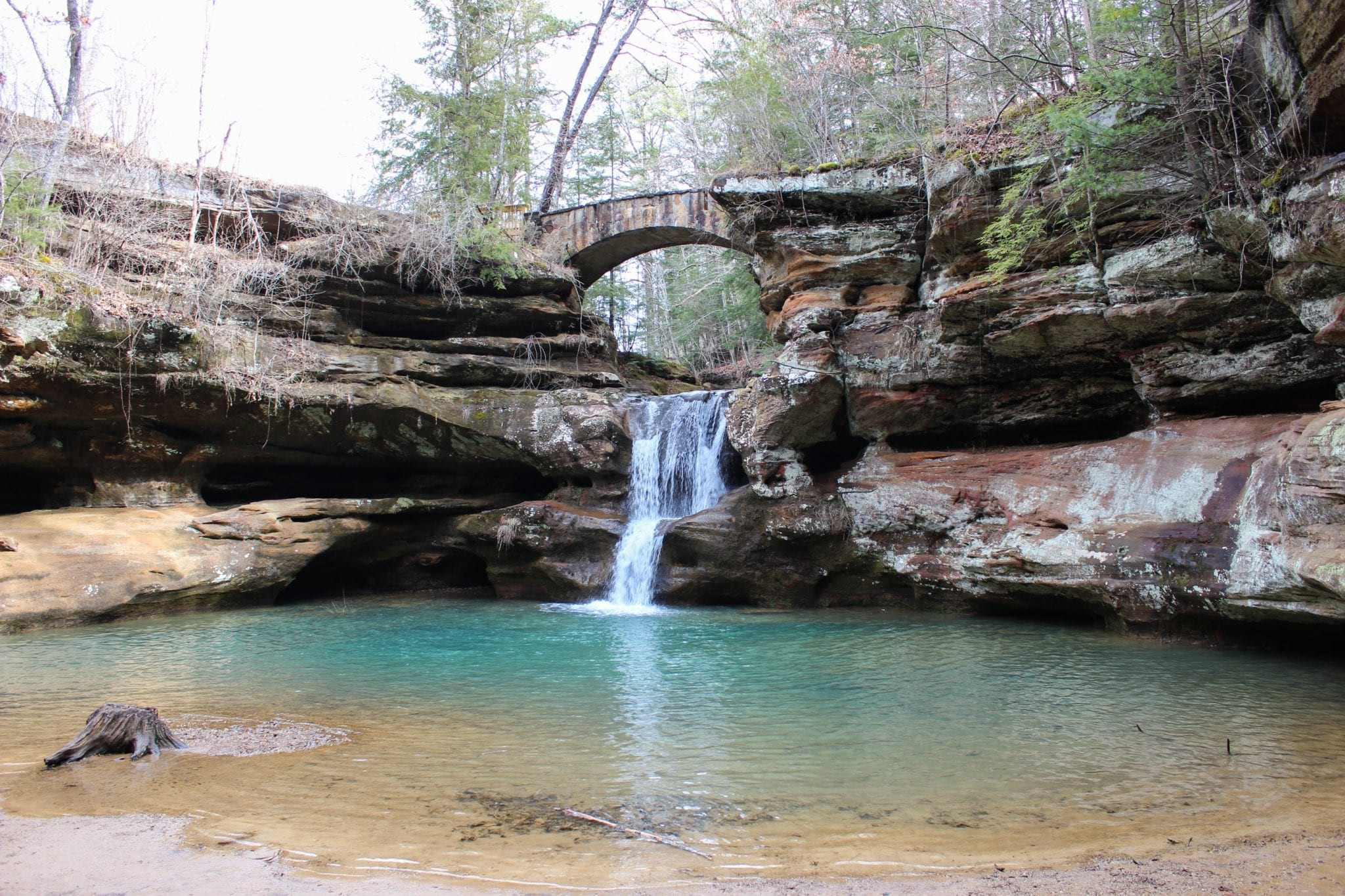 Upper Falls at Old Man's Cave in Hocking Hills
Upper Falls at Old Man's Cave in Hocking Hills
The Upper Falls at Old Man’s Cave in Hocking HillsBack to Top
Ohio: Buckeye State Finale
For many eastern cross-country trips originating in Pennsylvania, Ohio is the final state. Ohio is geographically diverse, with flat farmland in the north and west contrasting with forests and rolling hills in the south and east. Satellite images reveal a diagonal division across the state, separating these distinct landscapes.
Ohio Attractions
Ohio Back Road Routes
- US Route 36: US-36 winds through central Ohio, passing historic farming towns and villages, while bypassing Columbus traffic.
- State Route 32: Starting near Cincinnati, OH-32 quickly transitions from urban to rural and scenic as it heads east.
- US Route 250: US-250 cuts diagonally across Ohio, from Lake Erie at Sandusky (Cedar Point amusement park) through rural farmland to the foothills of West Virginia.
Another Option for Driving East: The Southern Cross Country Route
California: Southern California Spotlight
Yes, California appears again. Its size, beauty, and status as a common starting/ending point for cross-country trips justify a second mention. Southern California, while different from the north, is equally rich in attractions. For many itineraries, routes naturally begin or end in the Golden State.
Southern California Destinations
Back Road Routes in Southern California
Arizona: Southwestern Desert Majesty
Like Utah to the north, Arizona boasts stunning desert scenery, unique geological formations, and exceptional back roads. It’s also home to vibrant cities, diverse deserts, National Forests, and my personal favorite National Park – plus, a fantastic stretch of Route 66!
Arizona Attractions
Arizona Back Road Routes
 Sunset on a back road with kids
Sunset on a back road with kids
When to Plan Your Cross Country Road Trip Itinerary
Choosing the best time for a cross-country road trip is complex. Beyond the duration, consider climate, elevation, and weather extremes, which can vary dramatically across the country in the same months. Summer, peak season for many destinations, adds another layer of complexity.
Trip Duration: How Long for a Cross Country Drive?
The ideal trip length is flexible, depending on your pace and exploration desires. In April 2021, I drove solo from Pittsburgh, PA to Sonoma, CA – nearly 2,600 miles – in just 63 hours, prioritizing speed over stops. However, my first cross-country trip post-high school with a friend spanned over five weeks, looping through the central and southern US at a leisurely pace.
The necessary time depends entirely on your schedule and travel style. Retirees with flexible time can travel slowly, stopping frequently. Working individuals with limited vacation time and school-aged children will have shorter, more structured trips.
For those with limited time, I recommend this process:
- Top 3-5 Priorities: Identify must-see destinations with travel partners. Allocate more time for these, minimizing driving on those days.
- Secondary Priorities: List places of interest if time permits. Allocate less time, with moderate driving on these days.
- Transit Days: For less crucial segments, maximize driving to cover distance efficiently, perhaps choosing scenic routes for window-viewing.
Based on these priorities, consider these driving time guidelines:
- Top Priority Destinations: Limit driving to under 4 hours daily.
- Secondary Priority Destinations: Aim for 6-8 hours of driving per day.
- Transit Days: Drive 8-10+ hours daily, or as much as comfortable.
Driving Time Notes: “Driving time” refers to “butt-in-seat” driving, excluding stops for sleep, meals, fuel, restrooms, etc. Factor in 30-60 minutes of non-travel time per 4 driving hours. For 8 driving hours, expect 9-10 travel hours; for 12 driving hours, expect 14-15 travel hours. Prioritize at least 8 hours of sleep nightly.
Back road driving is slower than interstate travel. Expect an average of 40 miles per driving hour on back roads. A 200-mile back road drive may take approximately 5 driving hours.
TL/DR: For a round-trip cross-country journey, allocate at least 20 days. For a 6,000-mile trip, this averages 300 miles per day – manageable with balanced planning.
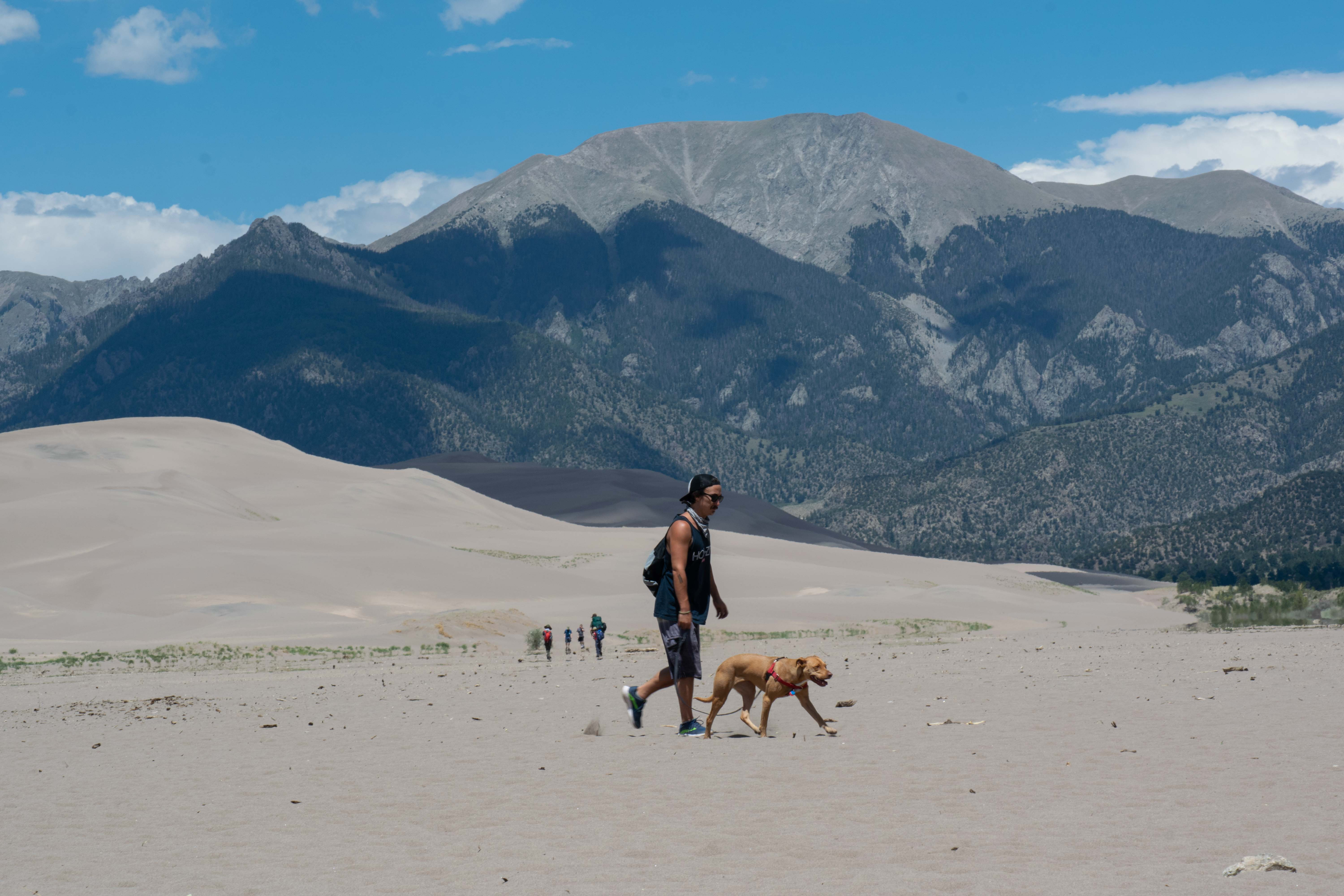 Man and dog at Great Sand Dunes National Park
Man and dog at Great Sand Dunes National Park
Do yourself a favor and don’t go to the desert in the heat of summer!
Best Time of Year for a Cross Country Road Trip
Weather variability across the US makes timing crucial, especially for campers. Weather is less critical for indoor lodging, but still relevant.
Families with children are often limited to summer trips due to school schedules. Child-free travelers have more flexibility and should consider avoiding summer crowds and heat.
Late spring and mid-fall are ideal. Fewer crowds and pleasant weather are typical. Specifically, mid-May or mid-September often offer the best balance.
Caution for spring and fall: High elevations and northern regions can experience cold weather. I’ve encountered severe snow in the Sierra Nevada in May and freezing weather in Idaho in late August (at higher elevations). Campers must be prepared for freezing temperatures in these seasons.
Despite these caveats, late spring and mid-fall are generally the best times for cross-country road trips!
Our campsite at Grand Teton National Park wasn’t too shabby!
Accommodation Options for Your Road Trip Itinerary
Overnight stay options on a cross-country road trip include:
- Hotels/Motels
- Camping
- Bed & Breakfasts (BNBs)
- Airbnb/VRBO
- Friends and Family
Mixing and matching options based on weather and budget is often optimal.
Hotels/Motels
Hotels/motels are convenient and comfortable. Nicer hotels offer clean rooms, comfortable beds, and breakfast. Downsides are cost and limited meal preparation options (unless opting for suites with kitchens). Affordable chain favorites include Holiday Inn and Best Western.
Camping
Camping is budget-friendly, especially “dispersed” or “wild” camping, offering scenic locations. Downsides include weather exposure and needing to find campsites during daylight, limiting daily driving distance. Resources exist for finding great campsites.
Bed & Breakfasts
BNBs, once less common, are experiencing a resurgence. They offer unique experiences, often in historic buildings with great hosts, architecture, and sometimes meals. They can be pricier but offer a distinctive lodging style.
Airbnb/VRBO
Airbnb and VRBO are modern BNB alternatives, offering diverse property rentals, from basic rooms to elaborate accommodations. Prices vary widely, providing budget and amenity flexibility. Finding the right place requires some research, but experiences are generally positive, though occasional “stinkers” can occur.
Friends and Family
Staying with friends and family is the most economical option. It’s free (hopefully!), often includes meals, and crucially, laundry facilities for long trips. My first cross-country trip in 1999 was primarily with friends/family stays, keeping costs (5 weeks, 9,000 miles) to around $900 per person, including hotels and meals. Friends and family also offer invaluable local insights on restaurants, attractions, and activities. The “downside” is trip routing may need to accommodate friend/family locations and availability.
Mixing in friend/family stays is recommended for budget and logistical reasons (laundry!), and for local travel tips.
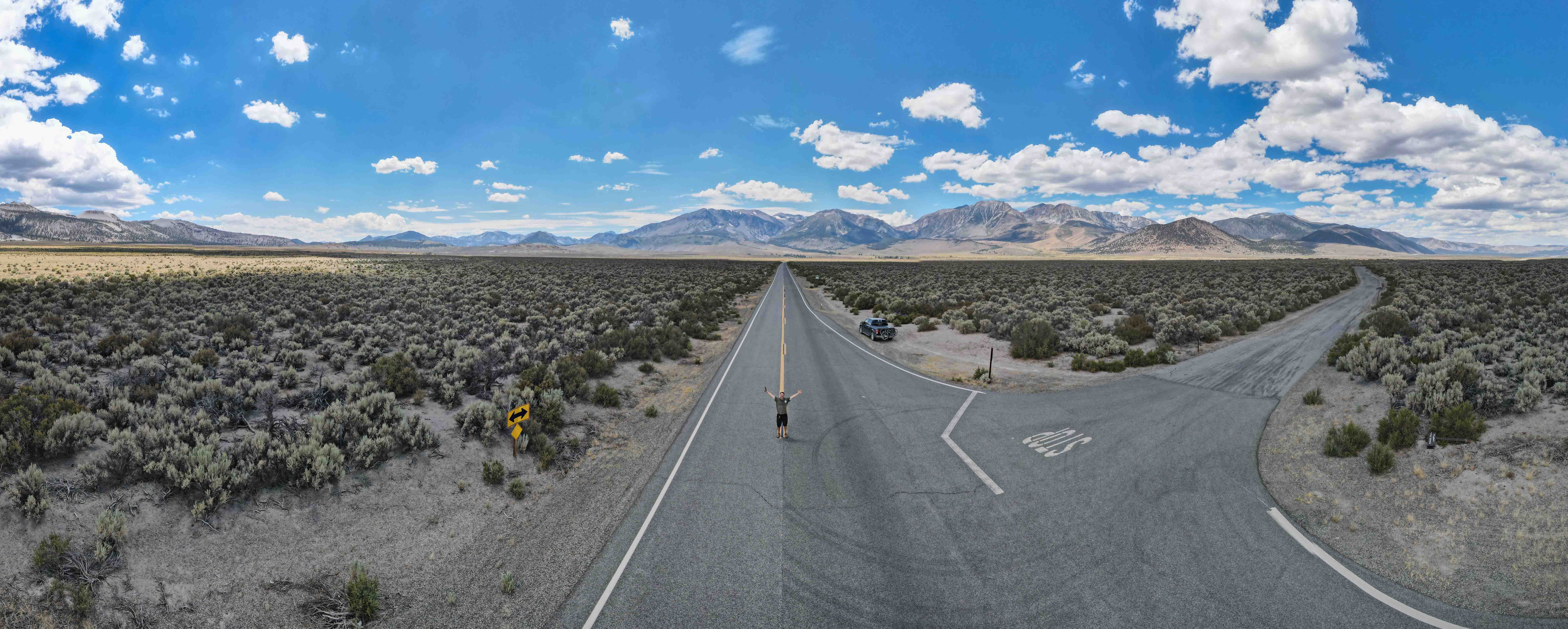 California desert back road drone shot
California desert back road drone shot
Essential Packing List for a Cross Country Road Trip Itinerary
Packing for a cross-country road trip is complex, depending on trip duration, season, destinations, vehicle size, lodging type, and travel companions. These suggestions are generic, providing a basic must-have list suitable for most trips. More specific camping gear lists are available in separate articles. Start by organizing packing into categories:
Road Trip Tips, Suggestions, and Travel Wisdom
Beyond my own cross-country road trip experiences, I’ve gathered insights from many other travelers over the past year to create this comprehensive guide. Experienced road trippers are generally enthusiastic about sharing advice!
One of the most critical lessons learned over years of road trips is:
Download Offline Maps – LINK (select Android or iPhone at the top). This cannot be overstated. Downloading offline Google Maps is my top recommendation for every road trip planning client. Cross-country trips inevitably involve areas with no cell service. Without offline maps, you risk losing navigation at critical times. Use the FCC Map to identify no-service areas and download maps accordingly.
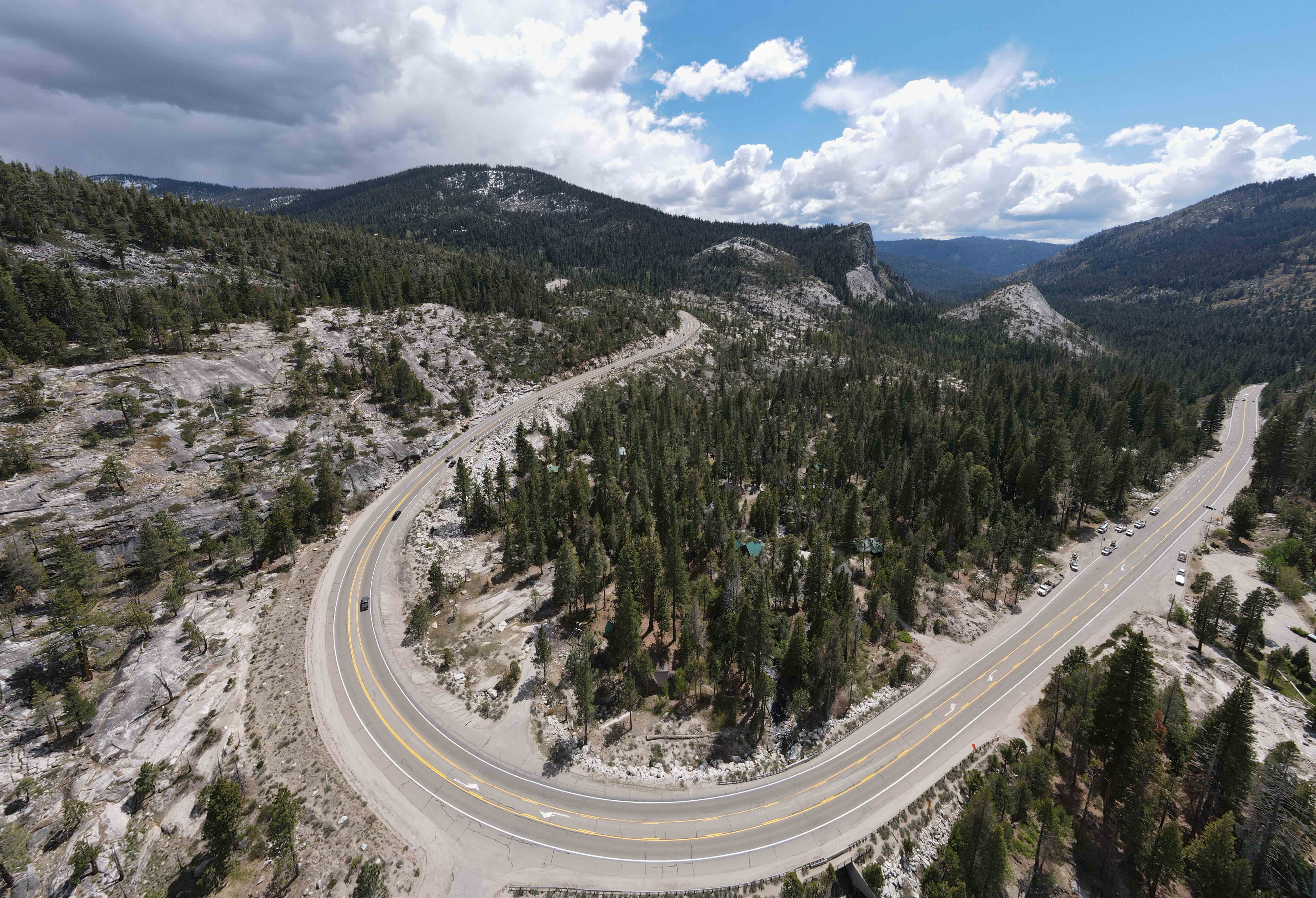 US Route 50 in California
US Route 50 in California
US Route 50 winds through several valleys on its way across the High Sierra in Eastern California
Road Trip Advice Highlights
- Have a general plan but embrace spontaneity.
- Pack multi-purpose items.
- Get a car power adapter (cigarette lighter to USB/outlets).
- Use reusable items (water bottles, mugs) instead of disposables.
- Bring a water bottle with filter or filter straw.
- Include stops at local shops, markets, antique stores for local culture.
- Opt for healthy snacks (trail mix, etc.), avoid sugary drinks.
- Bring recreational gear: bikes, scooters, rollerblades, etc.
- Visit state and county parks, not just National Parks.
- Use a shoe rack behind seats for organized storage.
- Buy a camp toilet and TP for vehicle use.
- Pack a “grab bag” with 2-days of clothing for easy overnight stops.
- Hydrate and consume electrolytes, especially in deserts.
- Practice tent setup at night with only a headlamp (for camping).
- Drive less than 12 hours daily; 7-8 is good, 4-5 ideal.
- Buy a National Parks Pass in advance.
- Visit friends and family along your route.
- Ask local bikers for scenic drive recommendations.
- Avoid long-distance night driving for safety and scenery.
- Eat meals with a view whenever possible.
- Get roadside assistance (AAA or similar).
- Freeze water bottles to use as ice packs and cold drinks.
- Find quirky local spots on Atlas Obscura, Roadside America, Factory Tours.
- Be aware of remote areas with long distances between gas stations – “don’t pass gas!”.
- Check next day’s weather nightly.
- Watch for road closures and plan detours.
- Open a dedicated credit card for the trip, cancel after to prevent fraud.
- Be flexible – plans can change due to unforeseen events.
- Maximize bathroom stops – gas, dog walks, supplies.
- Start days early – beat traffic, maximize daylight.
Explore more back roads travel tips & tricks!
Remember our website has an entire category dedicated to road trips!
And, if you need personalized help, ask us for road trip planning assistance.
Enjoy your incredible coast-to-coast adventure!
Share this:
Like this:
Like Loading…

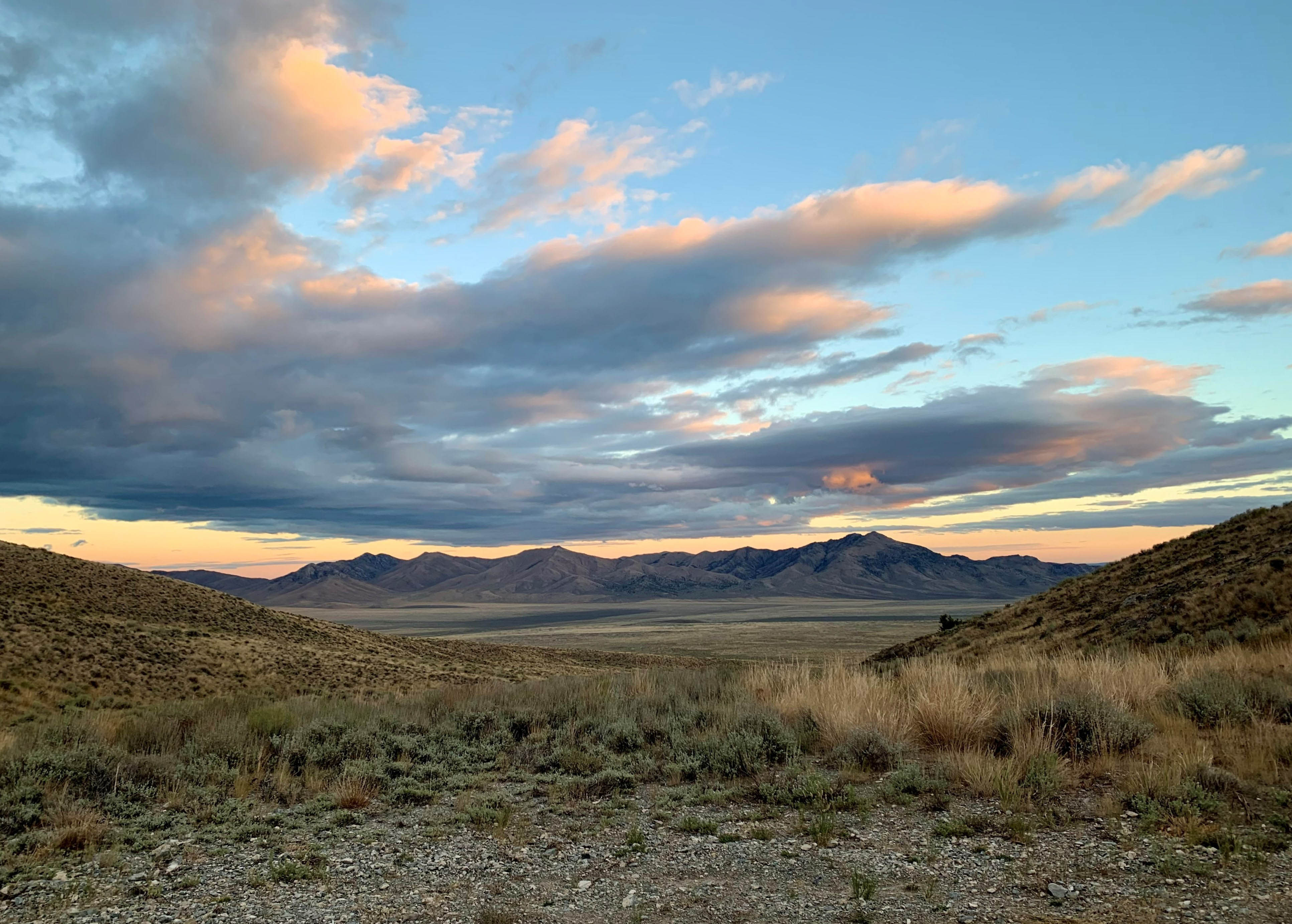 Idaho sunset over mountains
Idaho sunset over mountains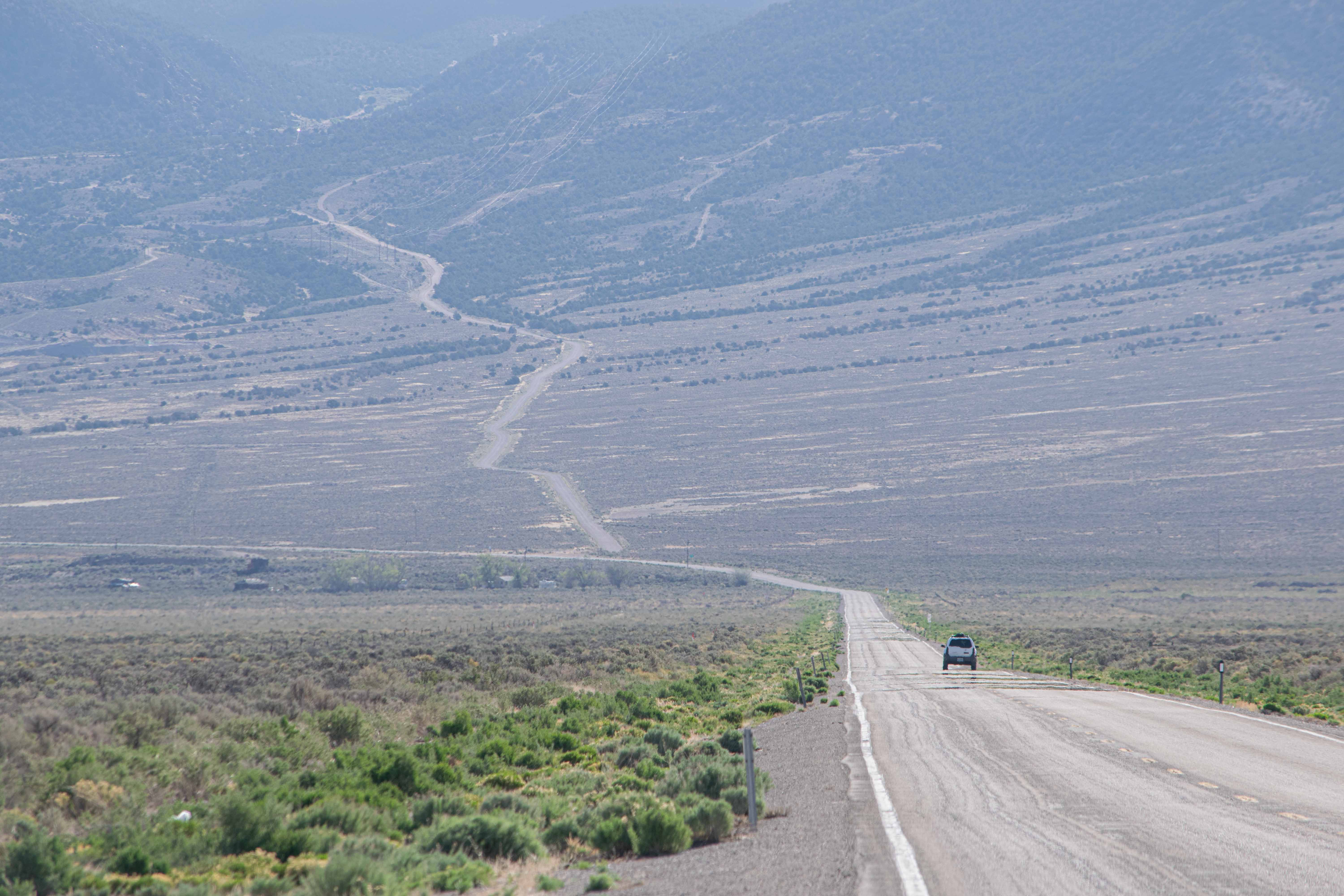 Twisty mountain back road
Twisty mountain back road